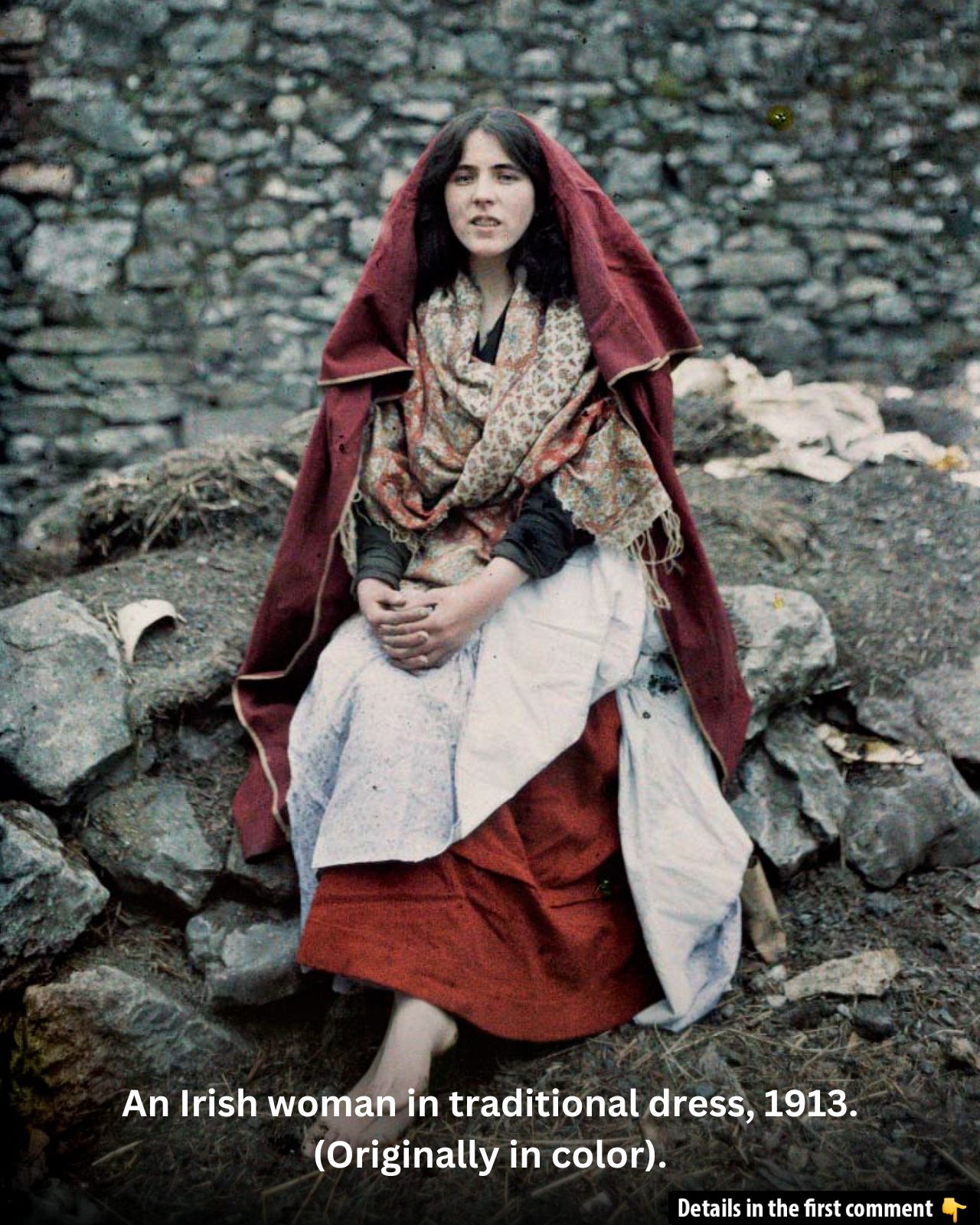In the late 19th century, a new technique emerged that allowed people to experience the past in a way that was previously unimaginable: Photochrom postcards. These colorized images captured some of Ireland’s most iconic landscapes and urban centers in vivid hues, offering a glimpse into the beauty and vibrancy of the country at the time. While black-and-white photographs often serve as the standard for historical records, these rare and stunning color images bring Ireland’s past to life like never before.
The Emergence of Photochrom: A Revolutionary Color Technique
The Photochrom technique was developed in the 1880s as a method of transforming black-and-white photographs into vibrant, colorized images. Unlike traditional color photography, which was still in its infancy, Photochrom provided an affordable and highly effective means of creating realistic colored images. By using a complex process involving lithographic printing, these photographs were infused with colors that matched the tones of the original scene. By the 1890s, Photochrom postcards became extremely popular, especially among tourists eager to bring home colorful reminders of their travels.
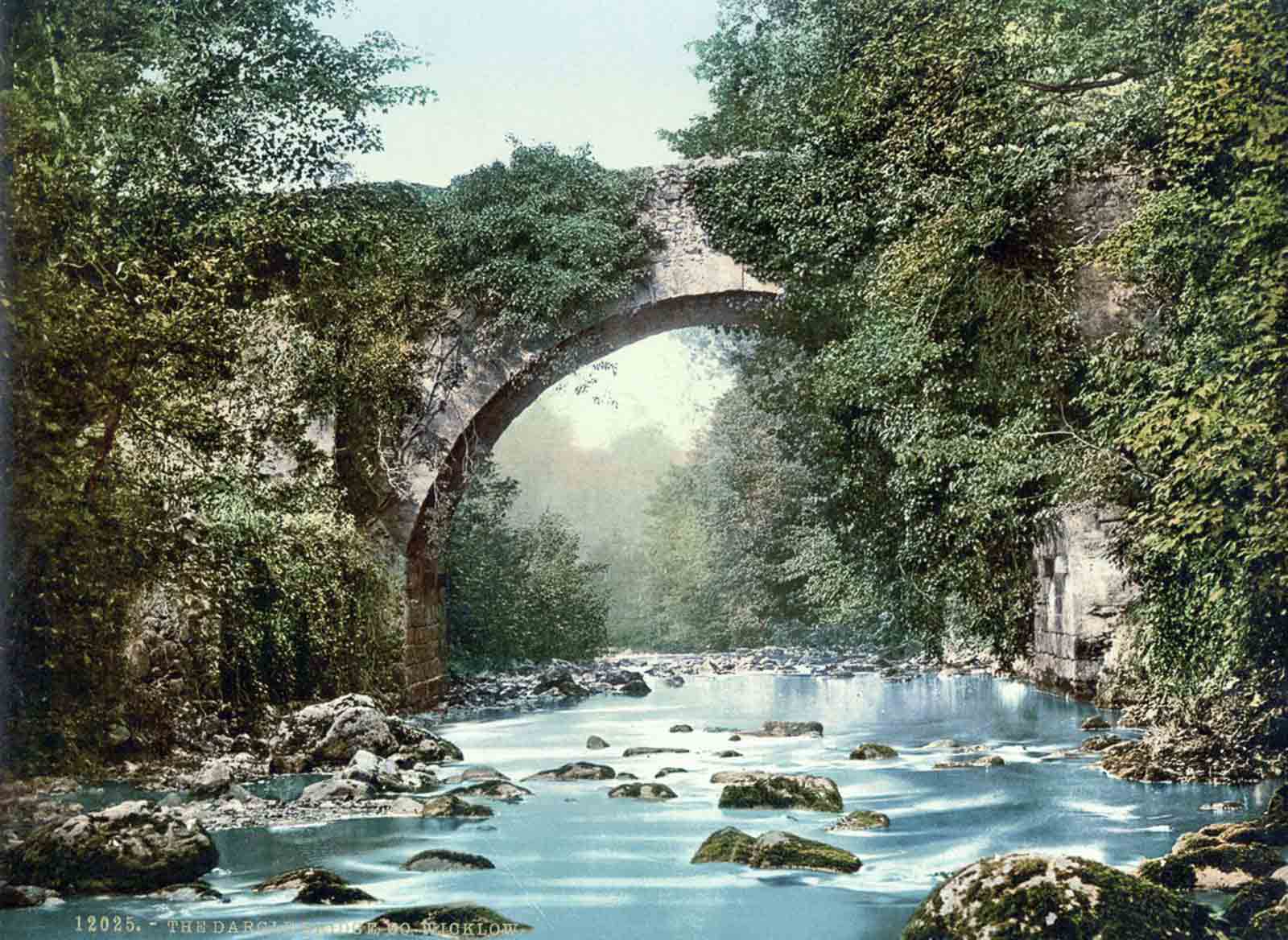
This method of colorization, though less advanced than the techniques used today, still provided an unparalleled visual representation of the world at the time. Its affordability and accessibility made it the perfect medium for mass production of postcards, allowing people to share beautiful views of faraway places with loved ones. In particular, Ireland became a popular subject for these postcards, with its lush landscapes, historic cities, and iconic landmarks.
Video
Capturing Ireland’s Most Iconic Tourist Destinations
The Photochrom postcards from the 1890s feature Ireland’s most famous tourist destinations, many of which still draw millions of visitors today. Among the most prominent locations captured in these postcards are The Cliffs of Moher, one of Ireland’s most photographed natural wonders, and The Giant’s Causeway, with its distinctive hexagonal columns of basalt. These stunning images, vibrant in color, showcase the country’s breathtaking natural beauty, making it easy to understand why these sites have remained some of Ireland’s most beloved attractions.
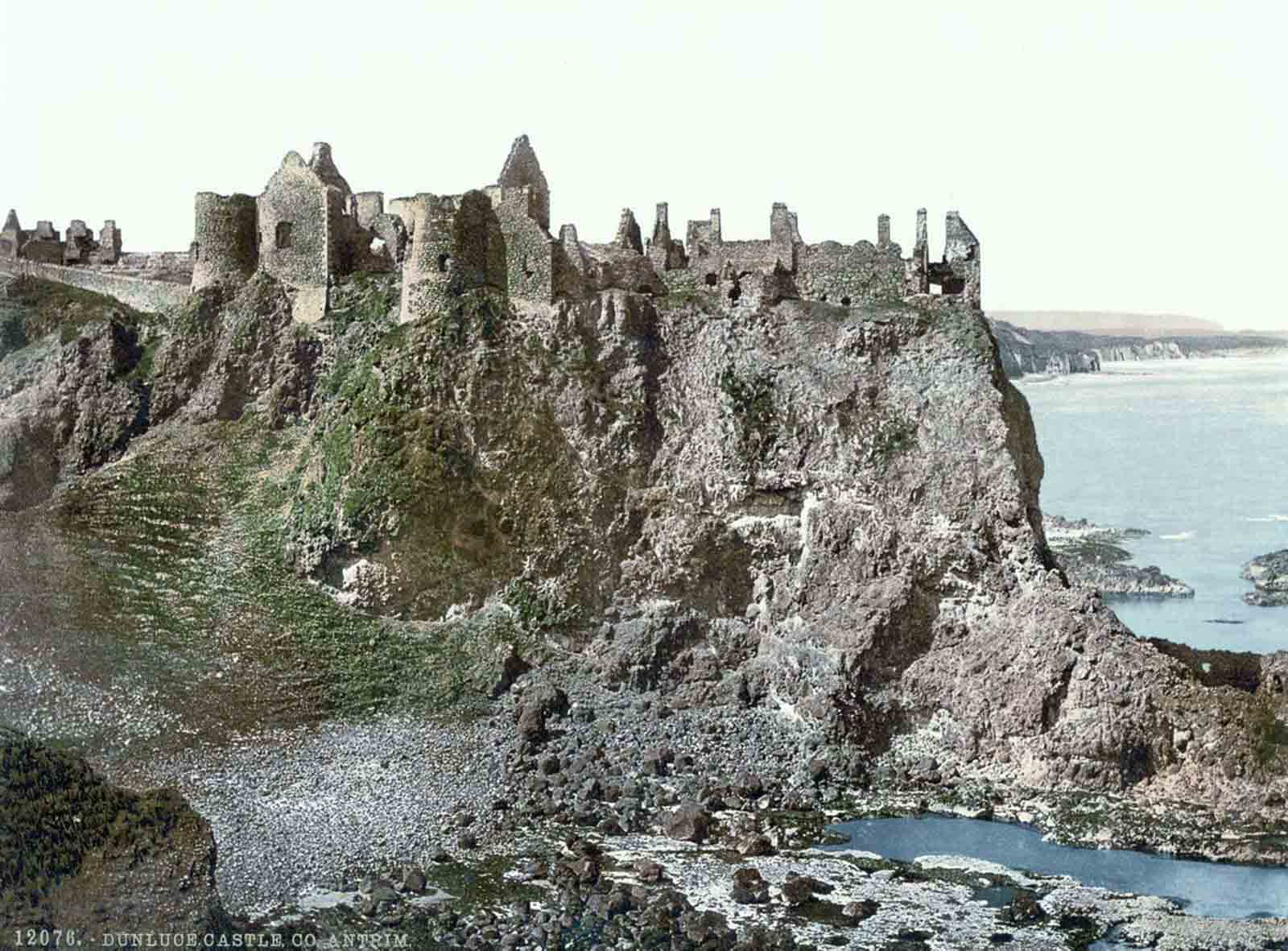
The postcards also highlight other picturesque locations, such as the dramatic landscapes of County Antrim and the serene shores of County Kerry. The striking colors of the sea, the cliffs, and the verdant hills bring a new life to these views, providing a visual connection to the past that is both informative and captivating.
Ireland’s Changing Urban Landscape in the 1890s
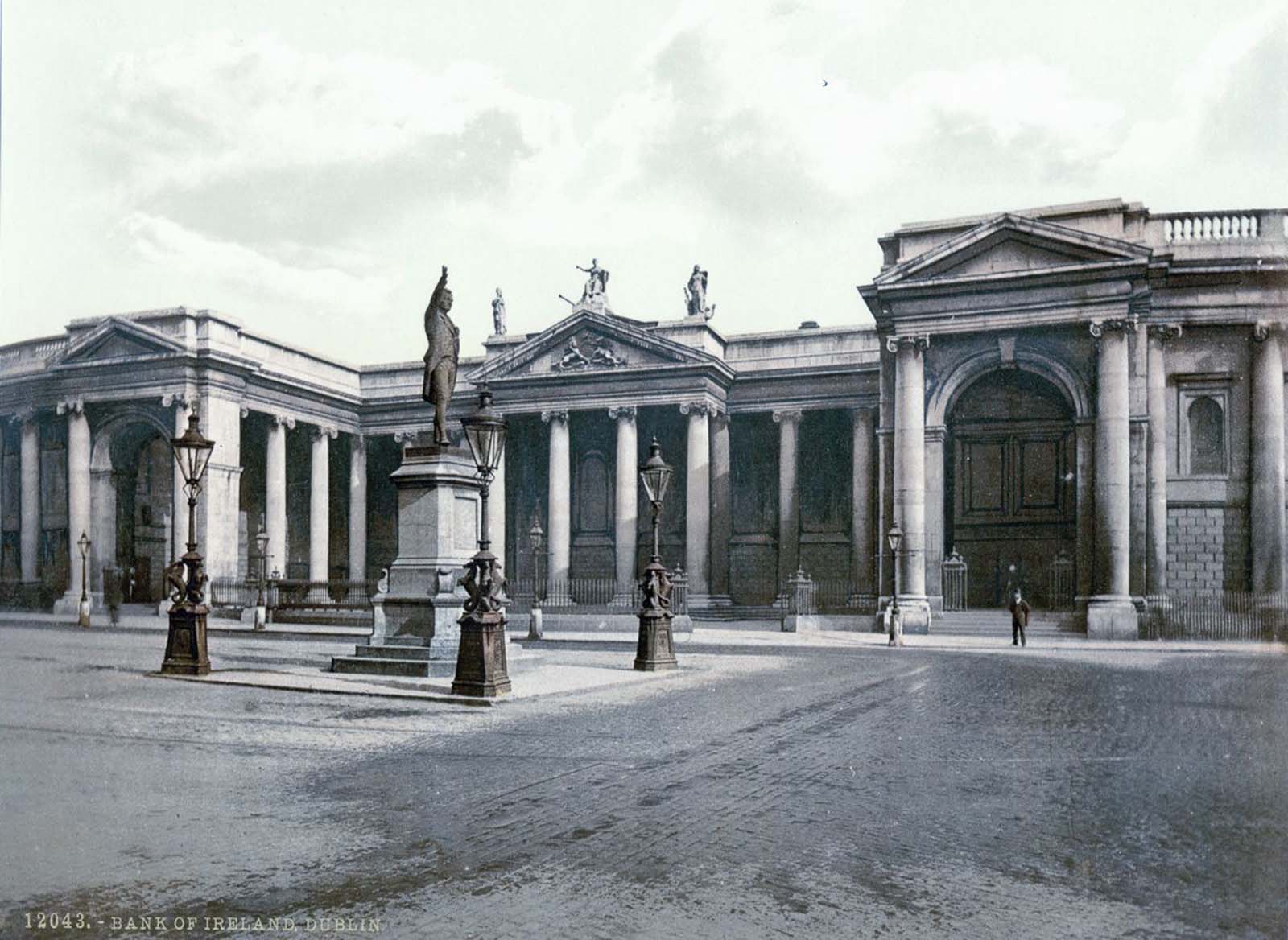
While the rural beauty of Ireland is often the focal point in these postcards, the urban landscape also plays a significant role. The late 19th century was a time of significant change for Ireland’s cities, and Photochrom postcards offer a unique snapshot of this transformation. Cities like Dublin, Belfast, Cork, and Waterford are featured prominently, showcasing their growing urban centers and developing infrastructure.
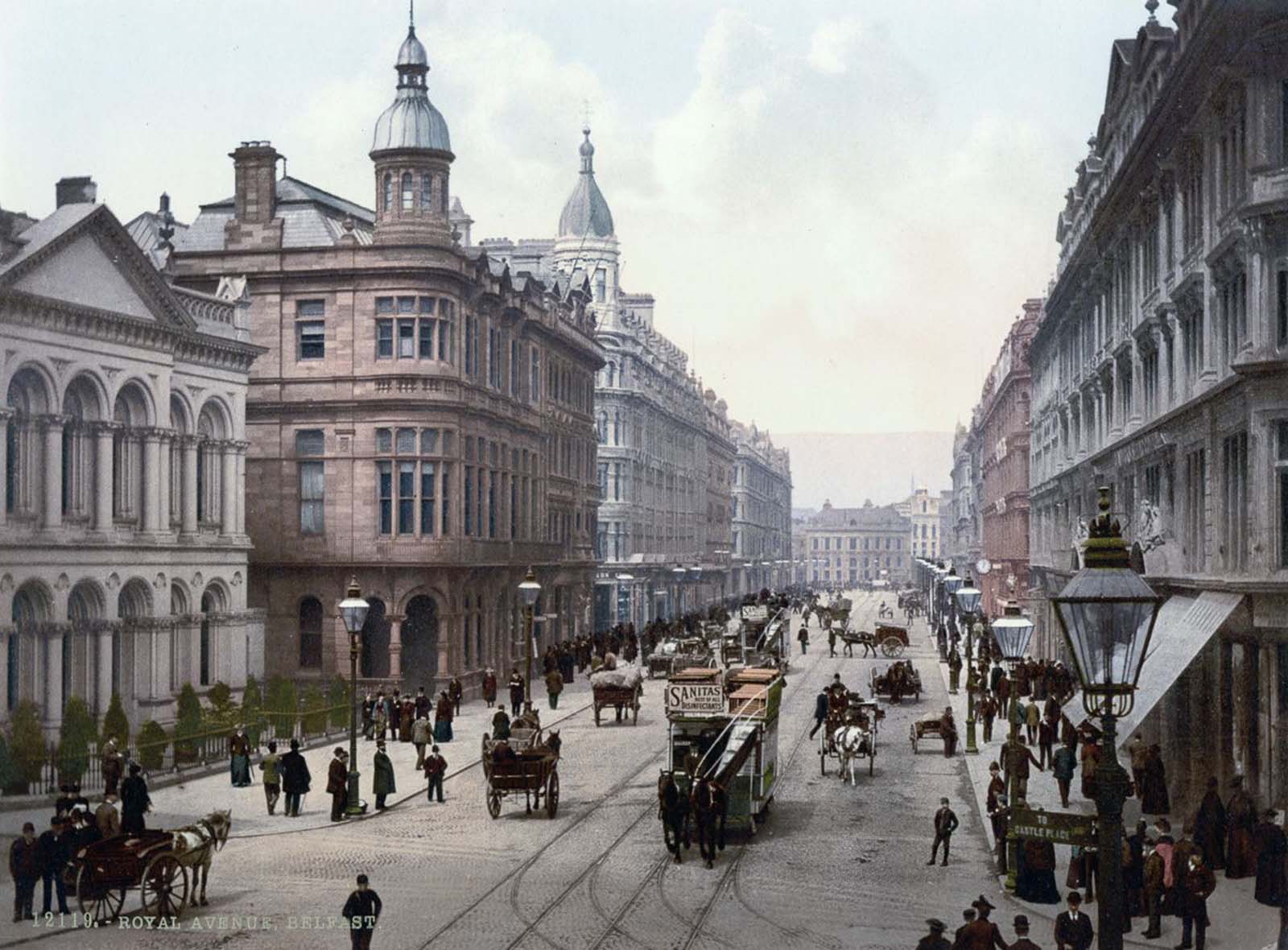
For instance, Dublin, the heart of Ireland, is depicted in its bustling streets, with newly constructed buildings and lively street scenes. Similarly, Belfast’s industrial expansion during the Victorian era is visible in the postcards, highlighting its transformation into a major industrial hub. While these cities were experiencing rapid urbanization, they also retained their old-world charm, with traditional buildings and cobbled streets offering a contrast to the new constructions emerging.
The Rural Irish Experience: Life Outside the Cities
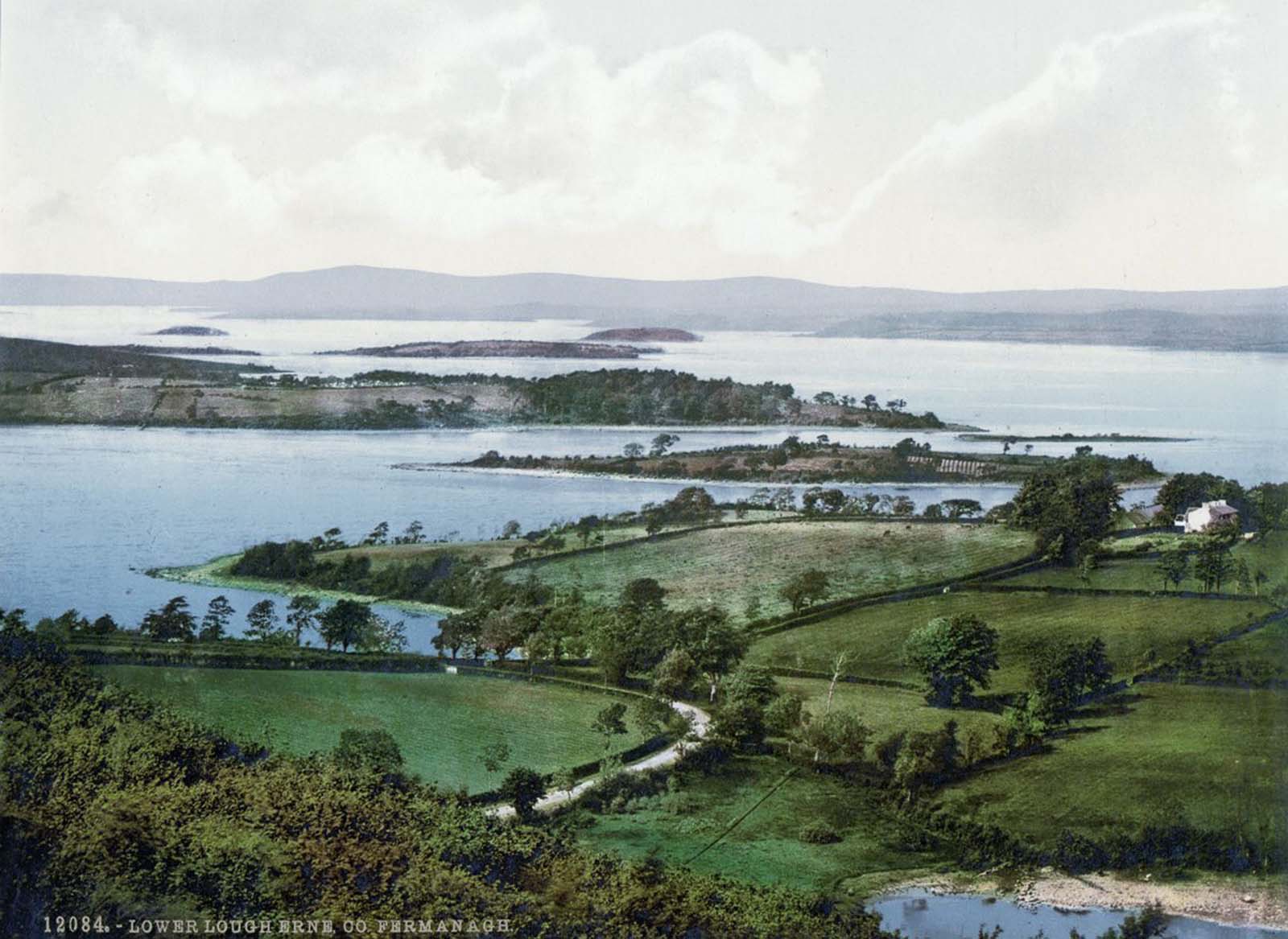
In contrast to the urban centers, the rural landscapes of Ireland captured in these postcards offer a quieter, more idyllic picture of the country. These images reveal the simplicity of life in rural Ireland, where farming remained the backbone of the economy. Postcards from this period often depict charming rural villages, small cottages, and expansive farmlands, emphasizing the connection between the Irish people and the land they worked.
One of the most striking aspects of these rural scenes is the prominence of the potato, Ireland’s staple food. Postcards feature images of farms where workers are cultivating the land, with lush potato fields stretching across the horizon. Despite the hardships faced by many rural Irish families, these images reflect a strong, resilient connection to the land.
Cultural Shifts and Social Context in Late 19th Century Ireland
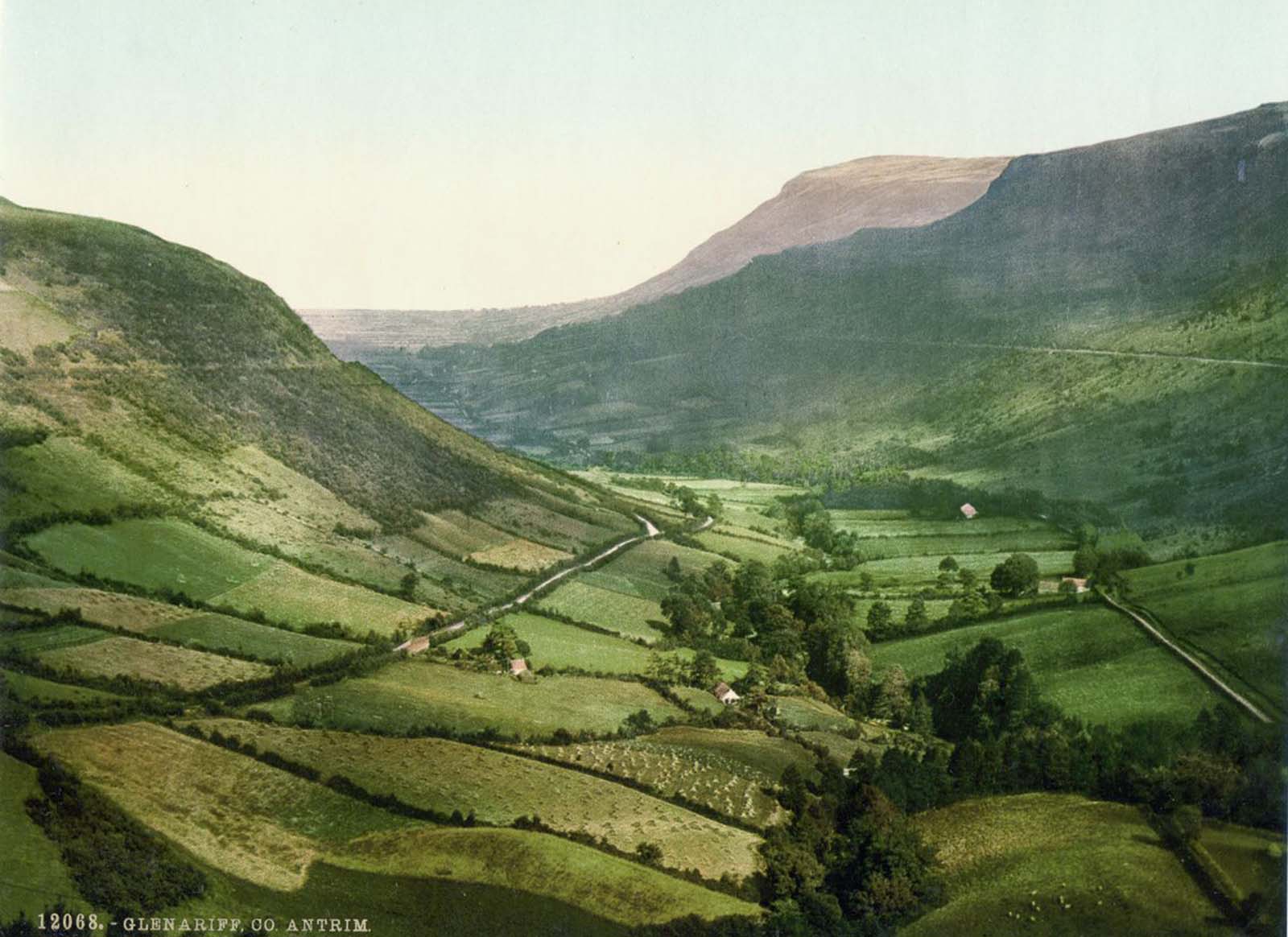
The late 19th century was a time of significant social and economic change for Ireland. The rise of industrialization in cities like Belfast and Dublin marked a shift from Ireland’s traditionally rural society, leading to increased urbanization. At the same time, the agricultural sector remained vital, particularly in rural areas, where people continued to depend on farming as their primary livelihood.
These postcards also reflect the cultural shifts of the period. As Ireland grappled with its identity and independence, the imagery of these postcards highlighted both the beauty of the land and the complexities of life within the country. The rural-to-urban transition is reflected in the stark contrast between the lush farmlands in one postcard and the growing cities in another, showcasing the diverse aspects of Irish society during this time.
The Enduring Legacy of Photochrom Postcards
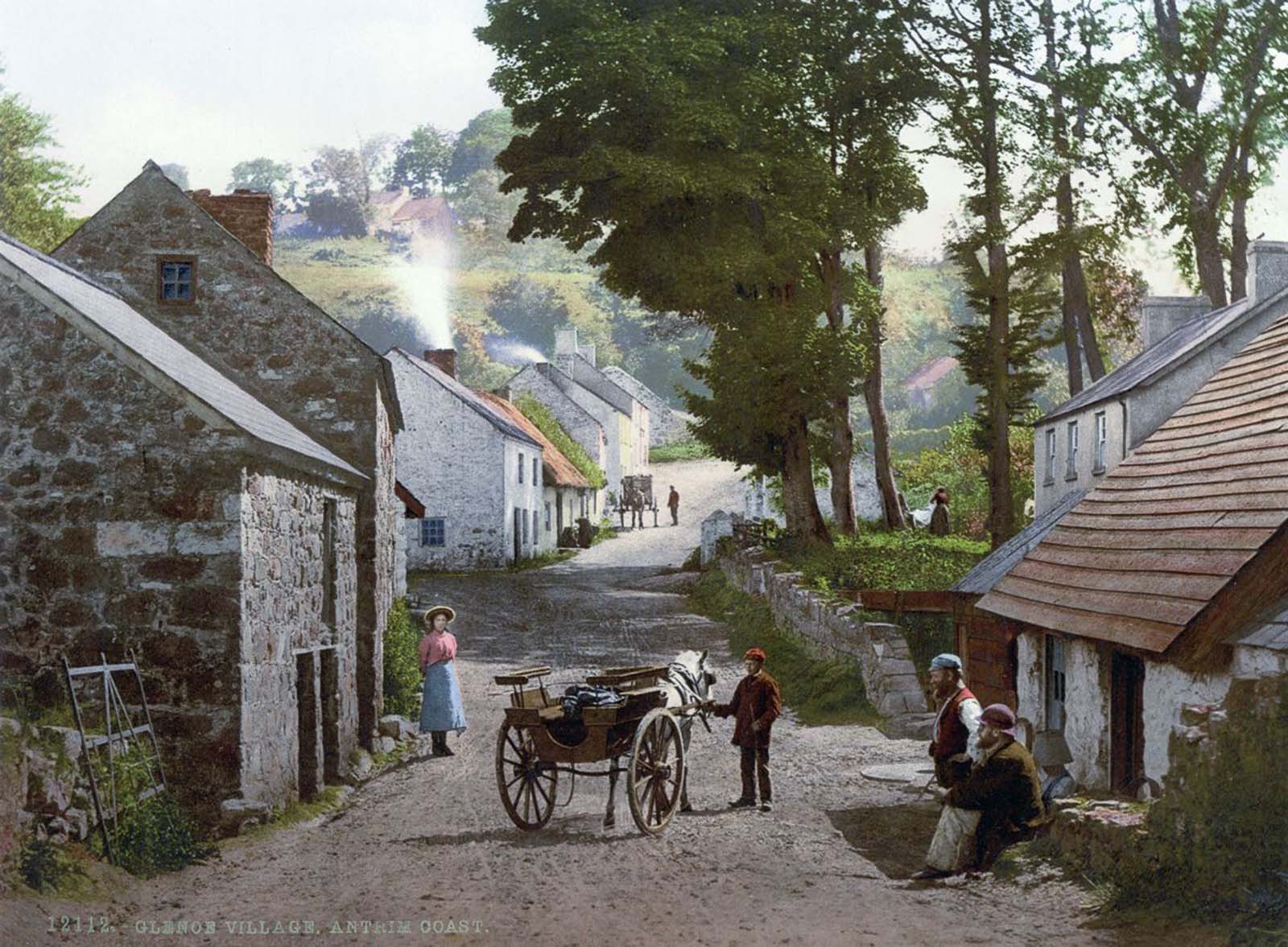
Despite being over a century old, Photochrom postcards remain a valuable historical resource. They offer a vivid and often surprising look at a time long past, providing insight into the landscapes, architecture, and everyday life of late 19th-century Ireland. The stunning colors of these postcards capture the essence of the country’s natural and cultural beauty in a way that black-and-white photographs simply cannot.
Today, these postcards serve as cherished mementos of a bygone era, offering a tangible connection to Ireland’s past. Whether displayed in museums or collected by enthusiasts, these postcards continue to captivate people around the world with their charm and beauty. They remind us not only of Ireland’s rich history but also of the ingenuity of the Photochrom technique, which allowed people to experience the world in full color long before color photography became mainstream.
Iconic Locations Captured in Photochrom Postcards
Several iconic locations throughout Ireland are immortalized in these vibrant Photochrom postcards. The Giant’s Causeway, with its dramatic basalt columns, is one of the most striking features of Ireland’s landscape, and the postcards highlight its otherworldly beauty in stunning detail. Other locations such as the Dargle Bridge in County Wicklow, the picturesque Vale of Avoca, and the breathtaking Powerscourt Waterfall are also featured, offering a window into Ireland’s scenic variety.
These locations are still famous today, attracting tourists from all over the world. The Photochrom postcards capture them in a moment of time that blends both the natural and human-made, giving a sense of how Ireland’s visual identity has remained largely unchanged over the past century.
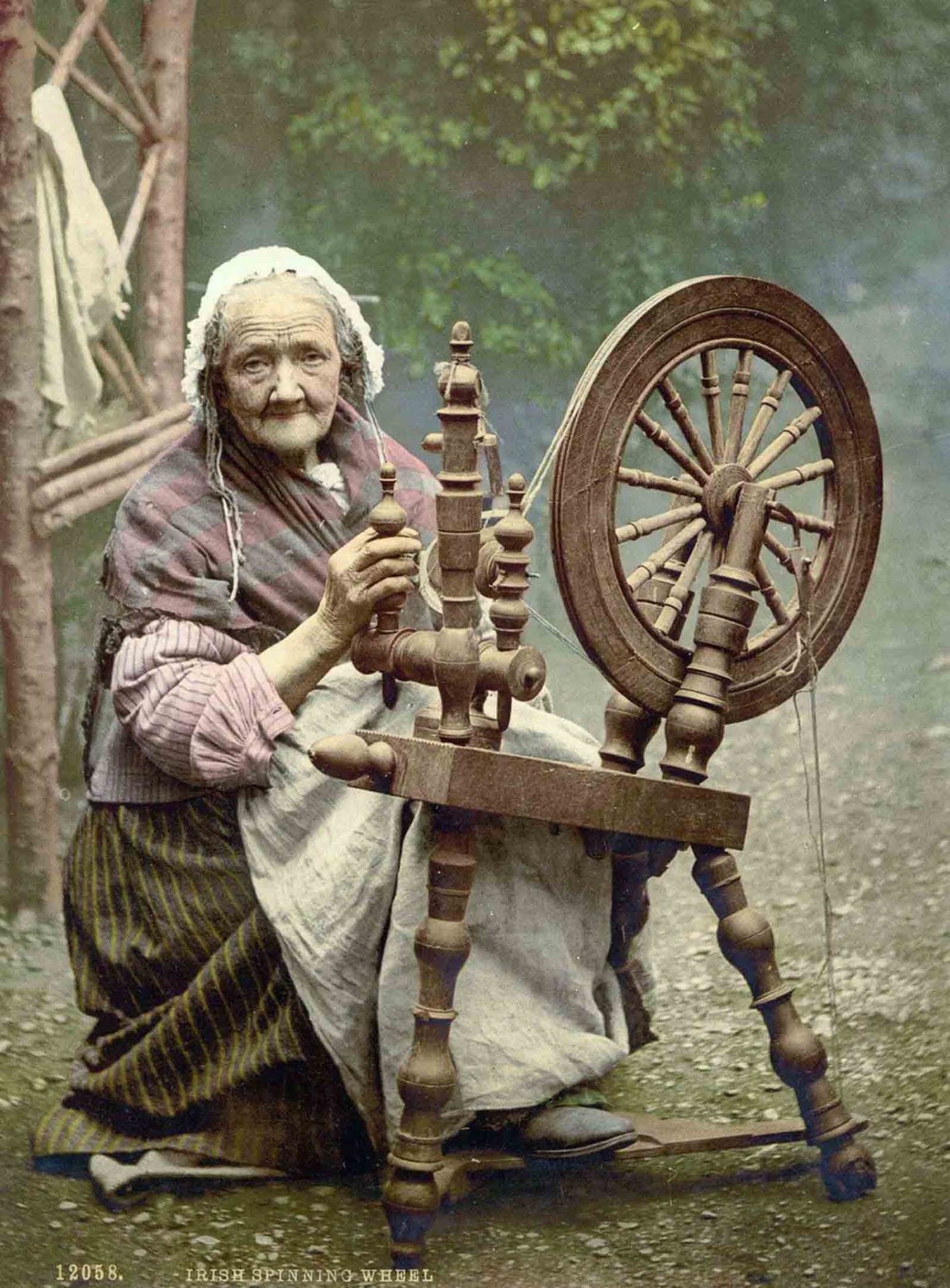

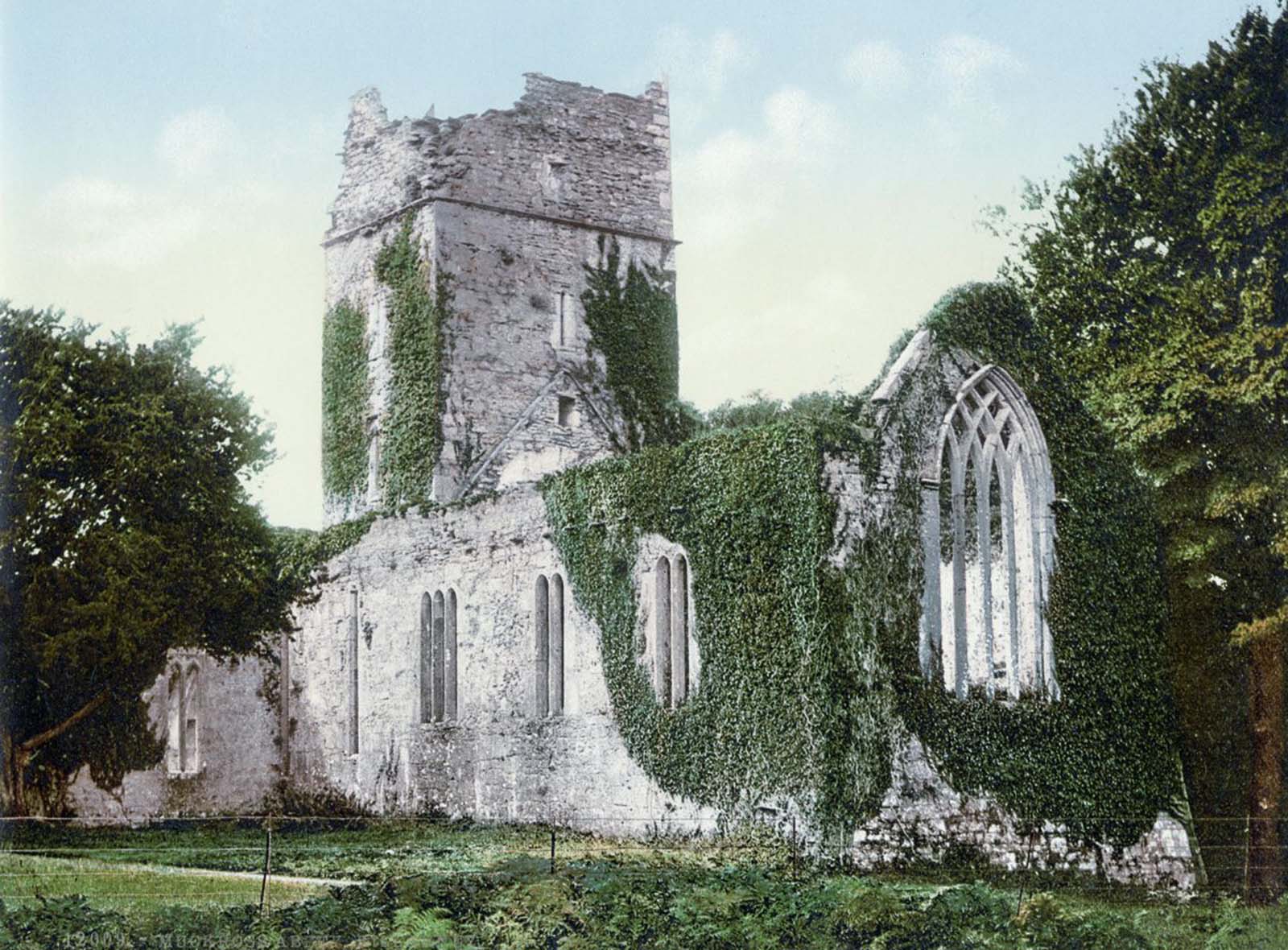
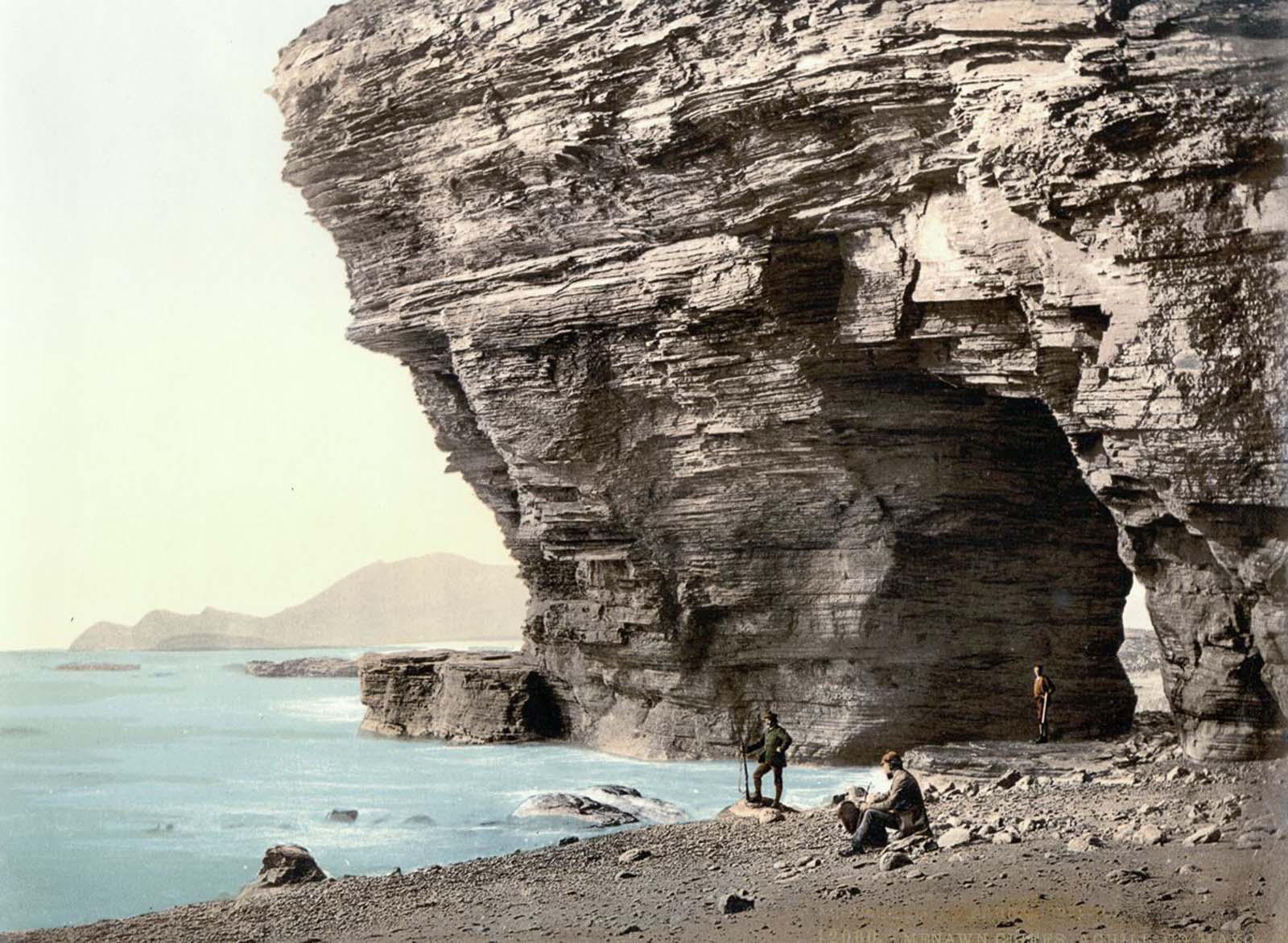

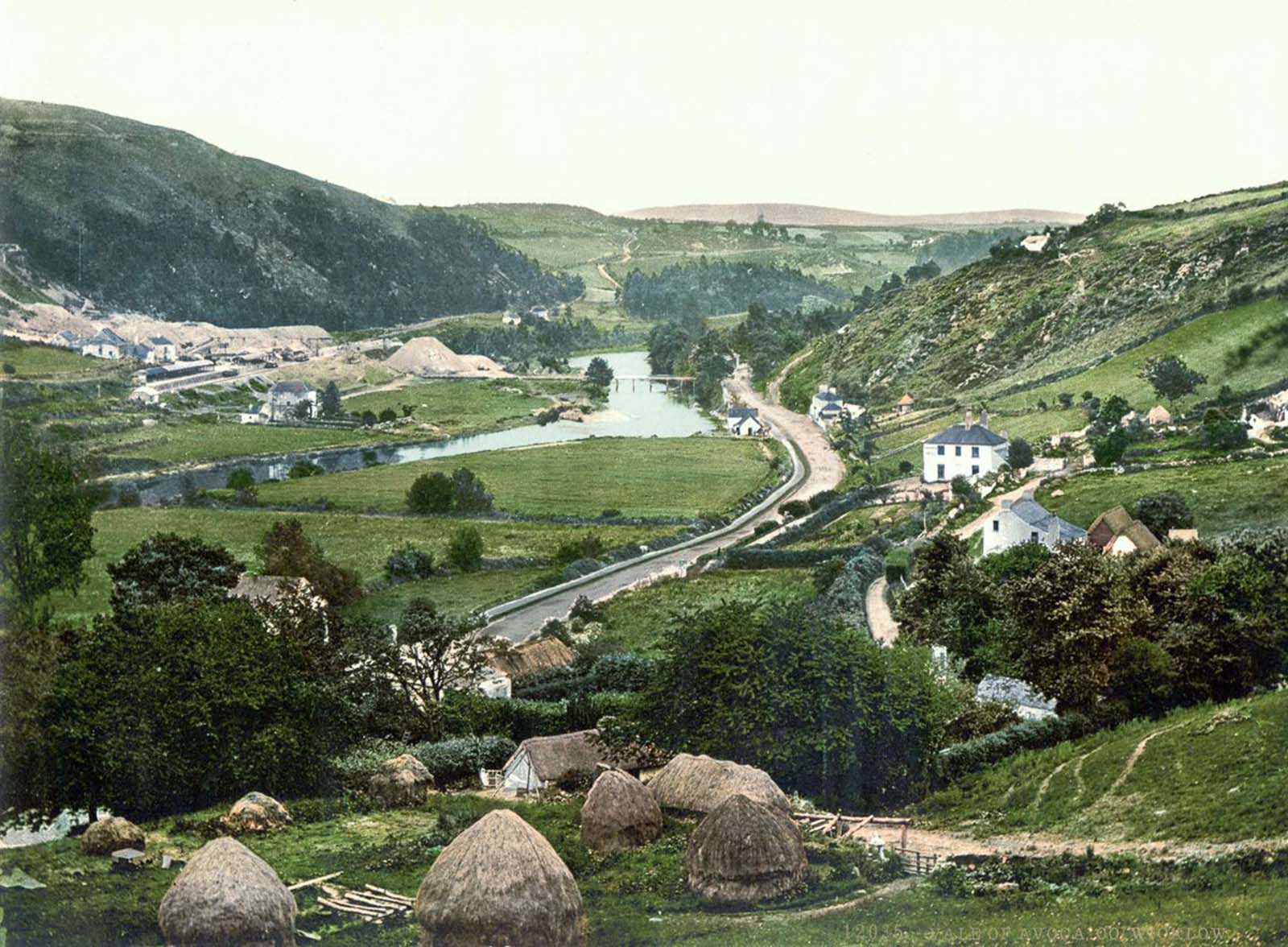
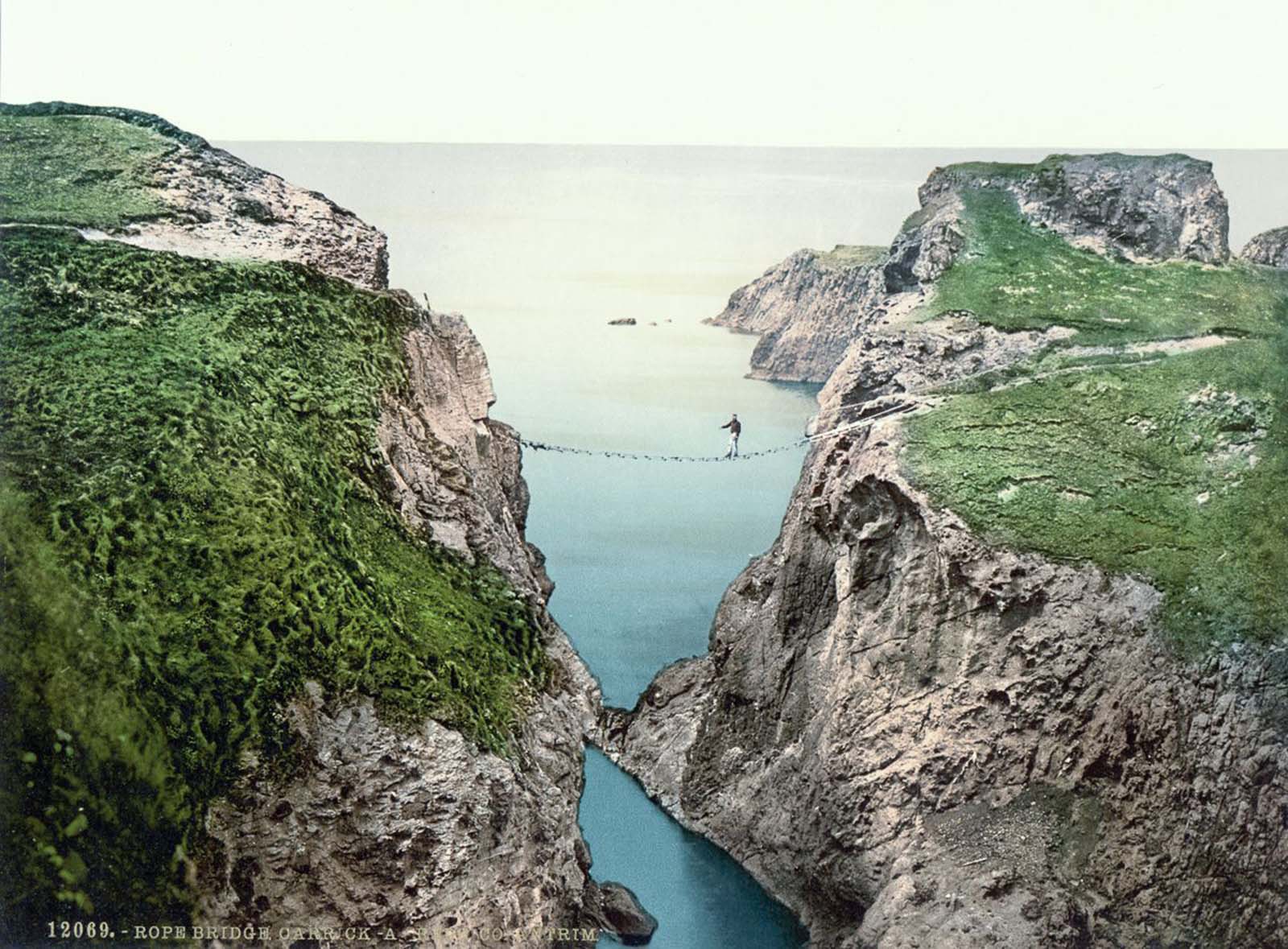
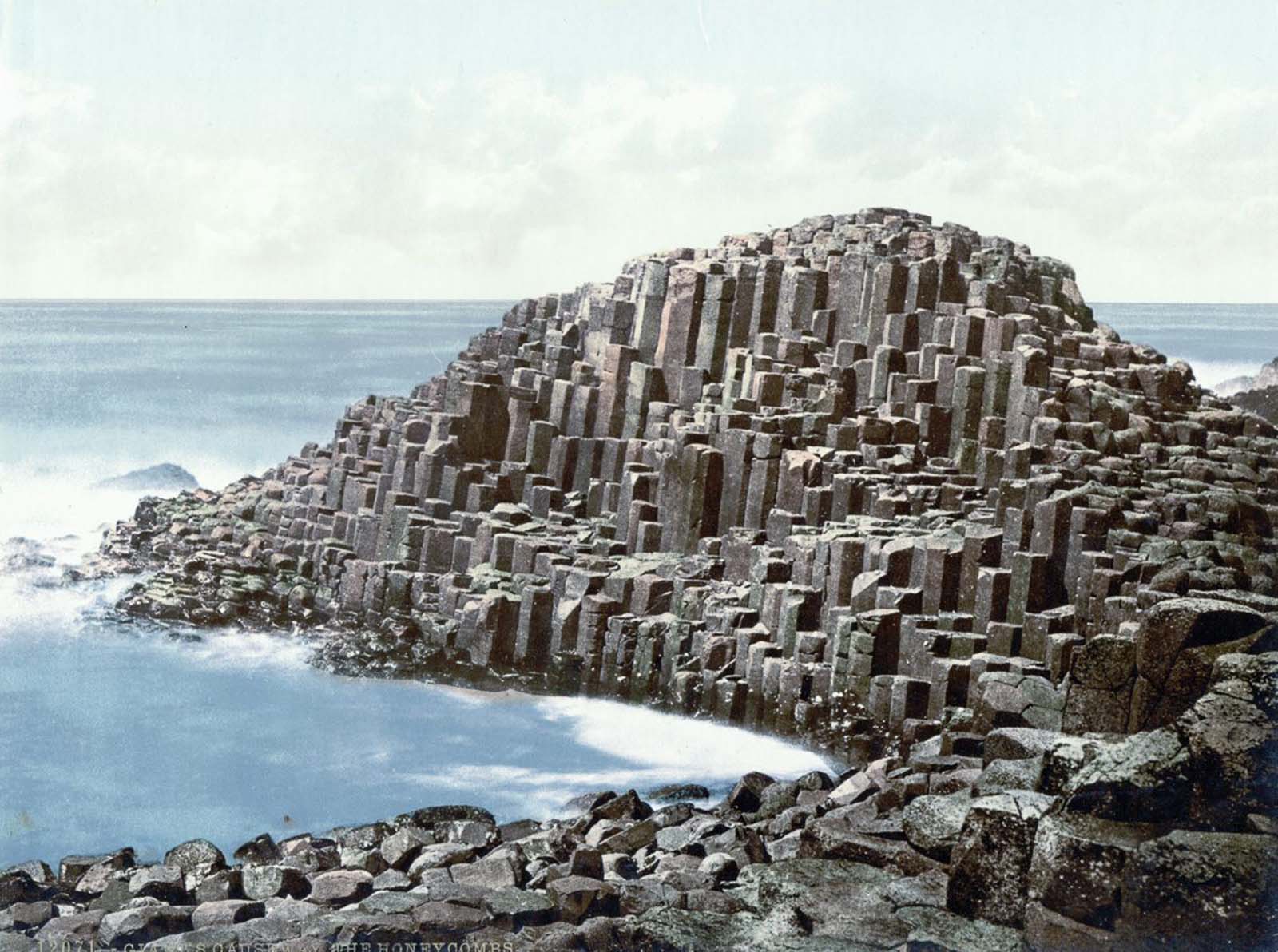
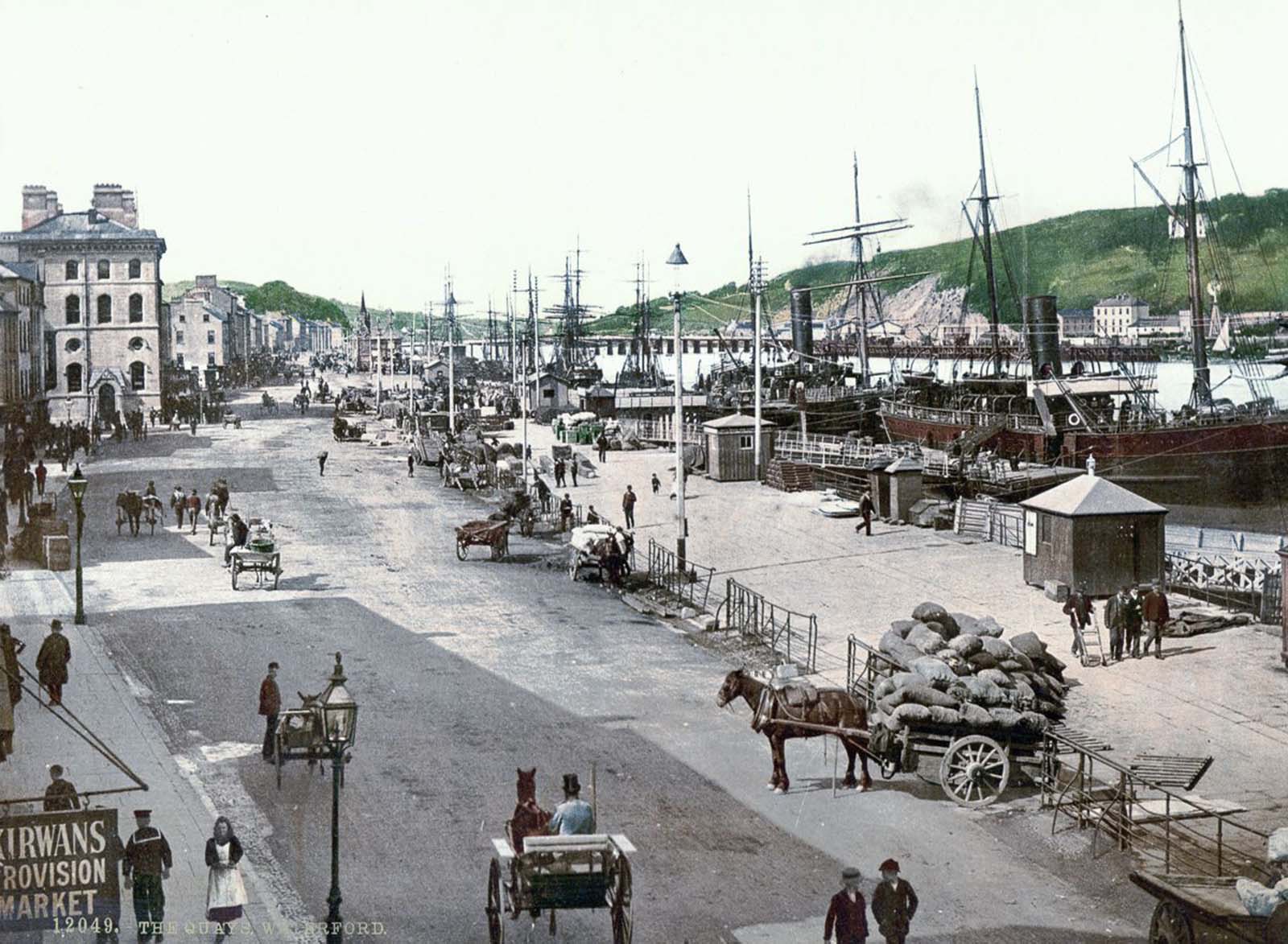
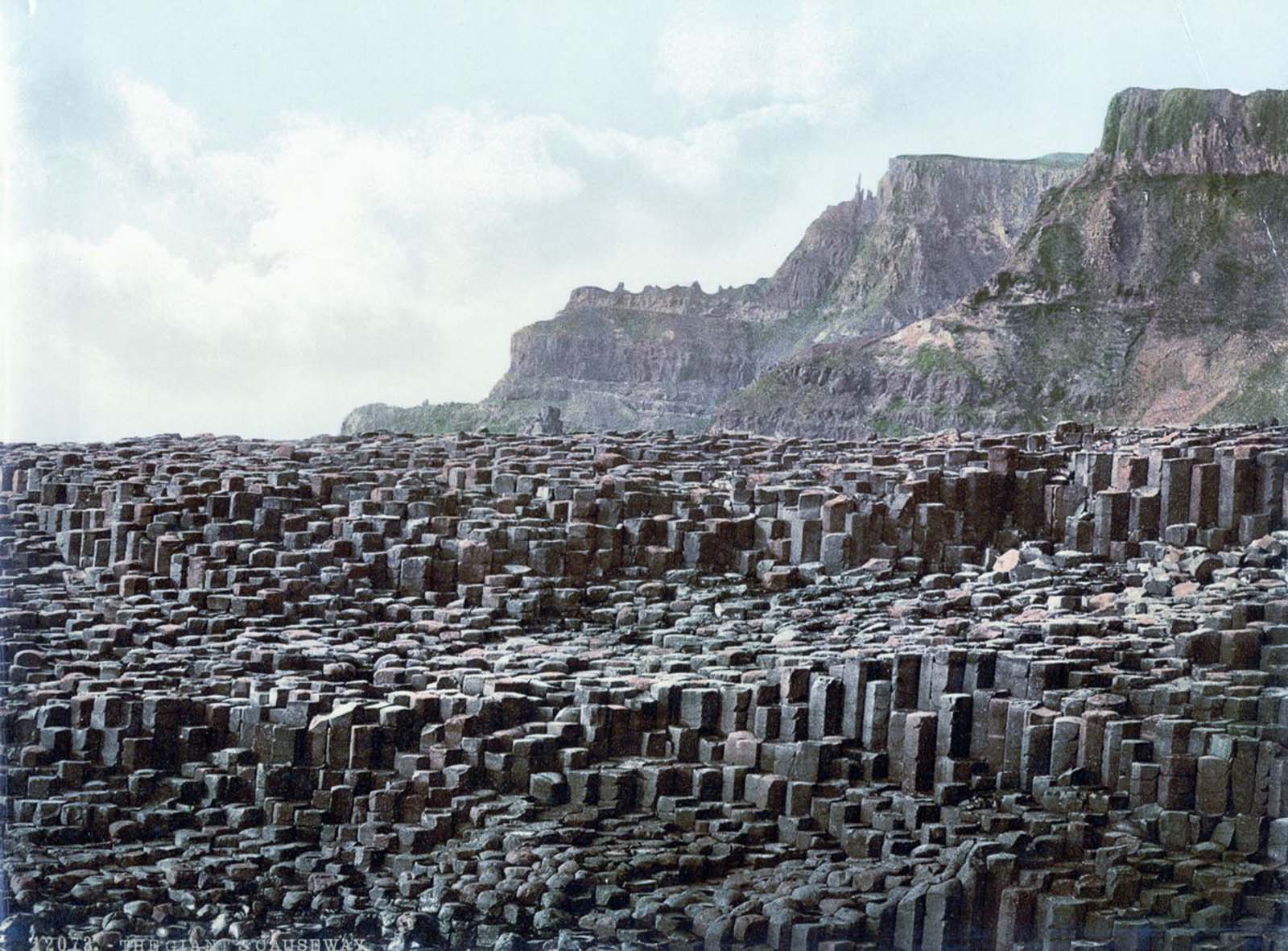
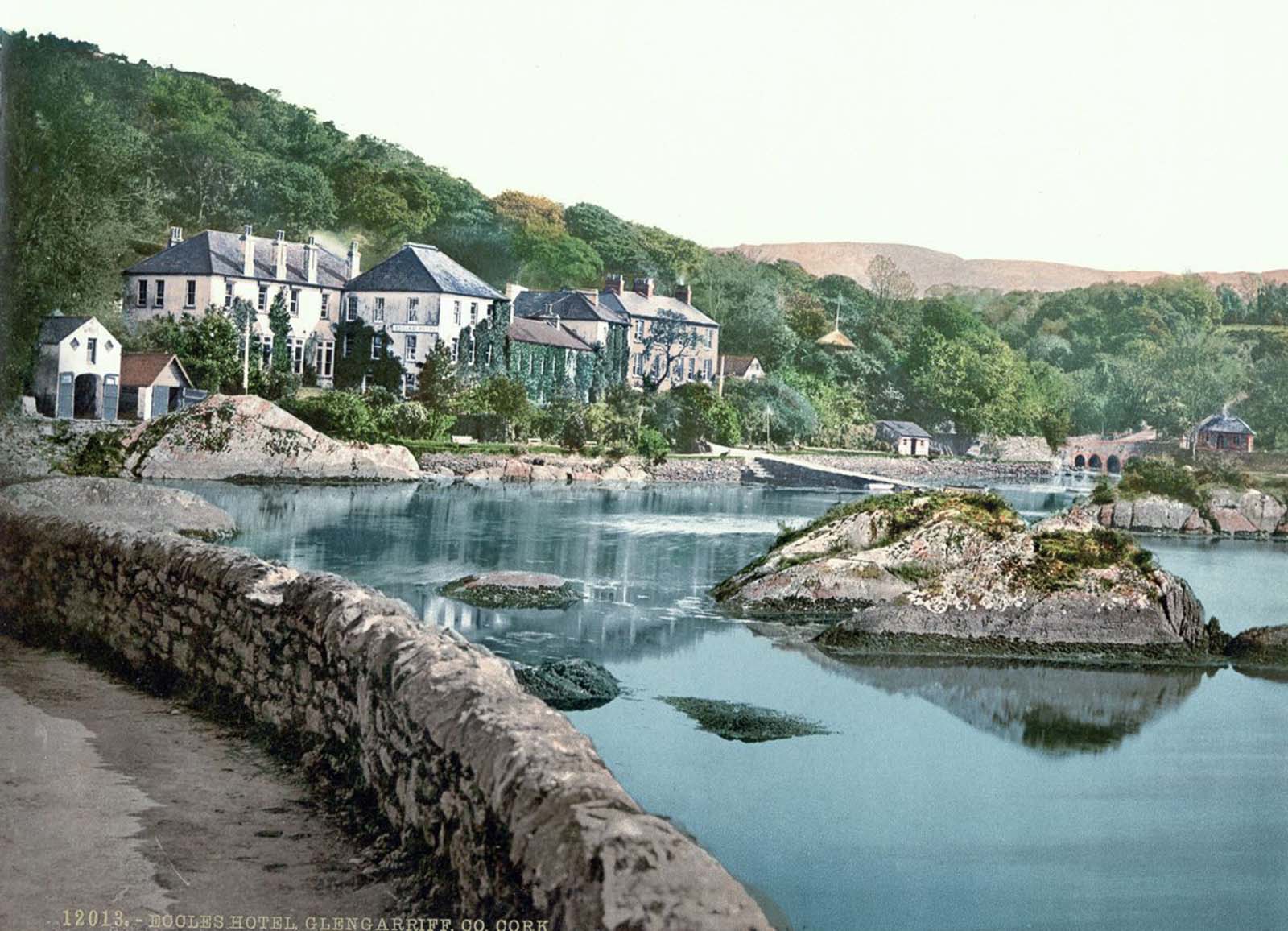
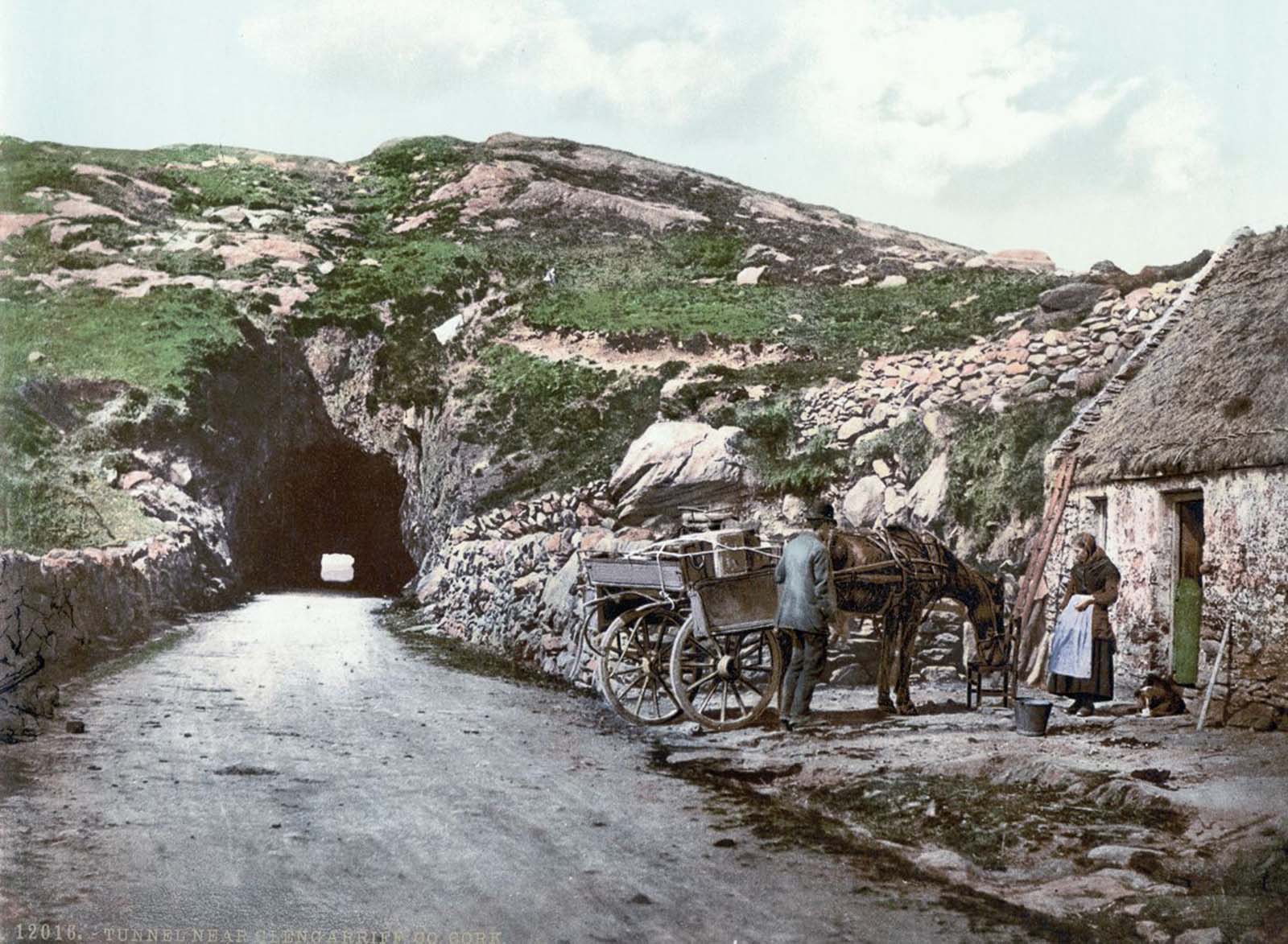
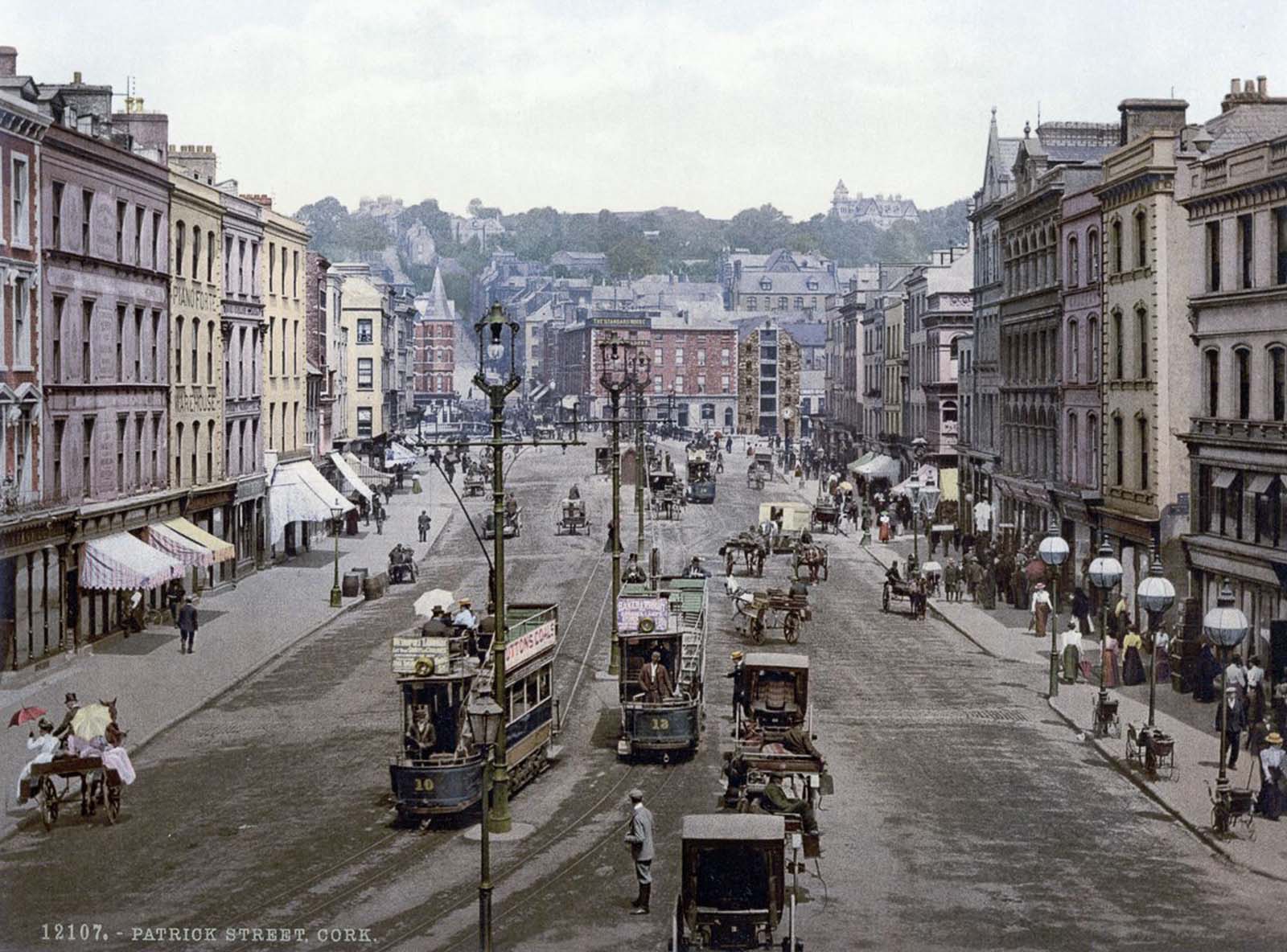

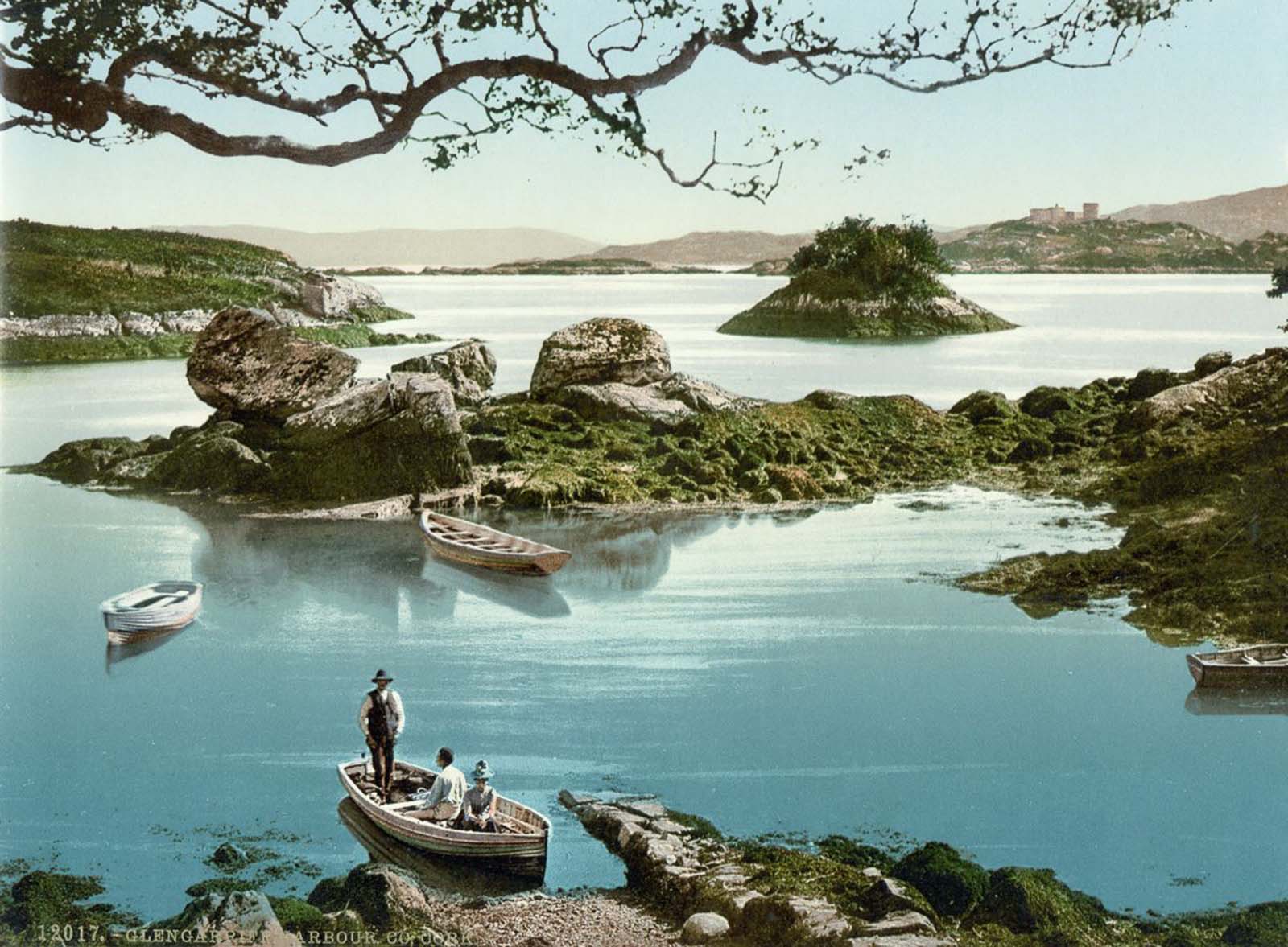
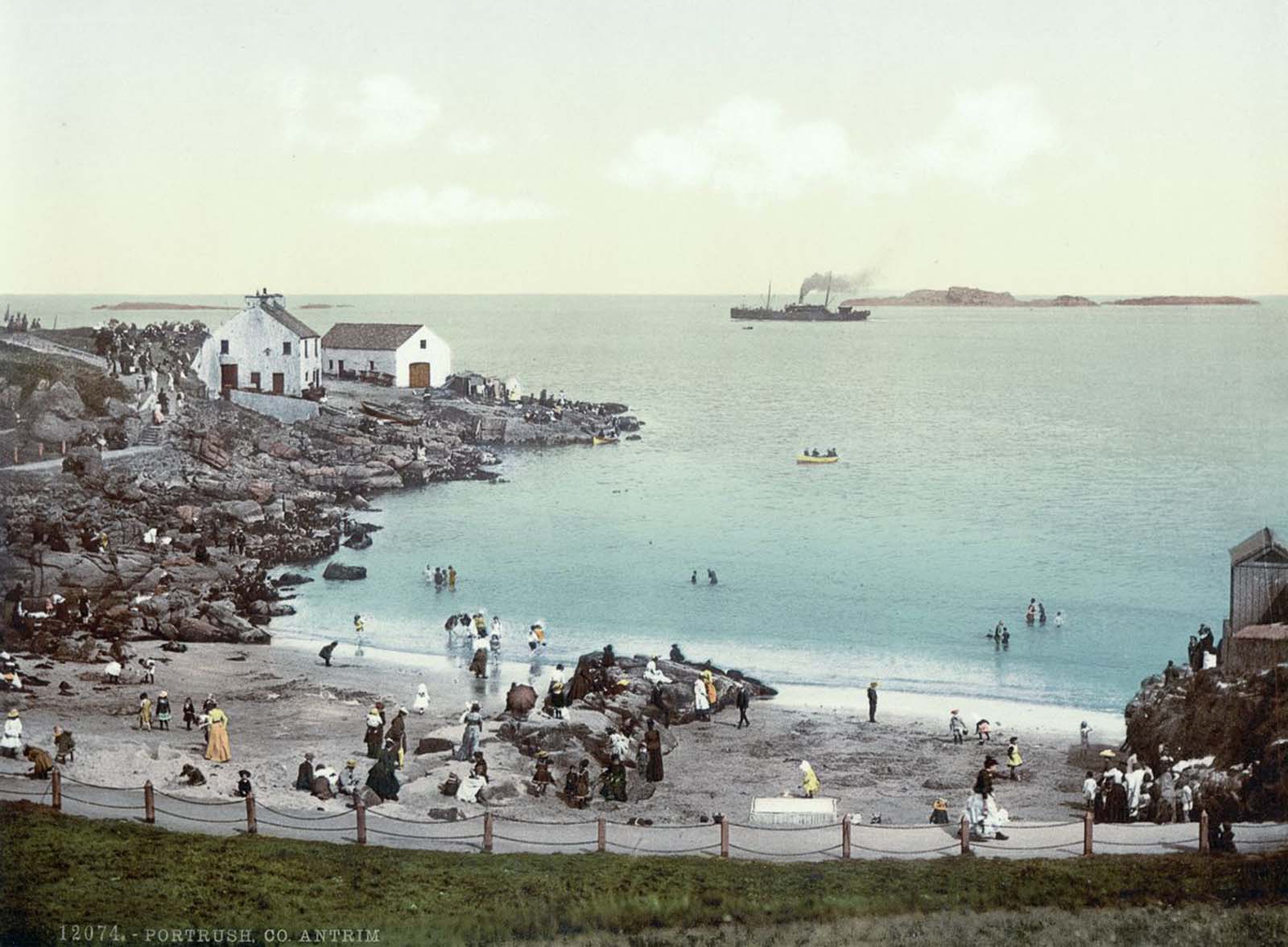
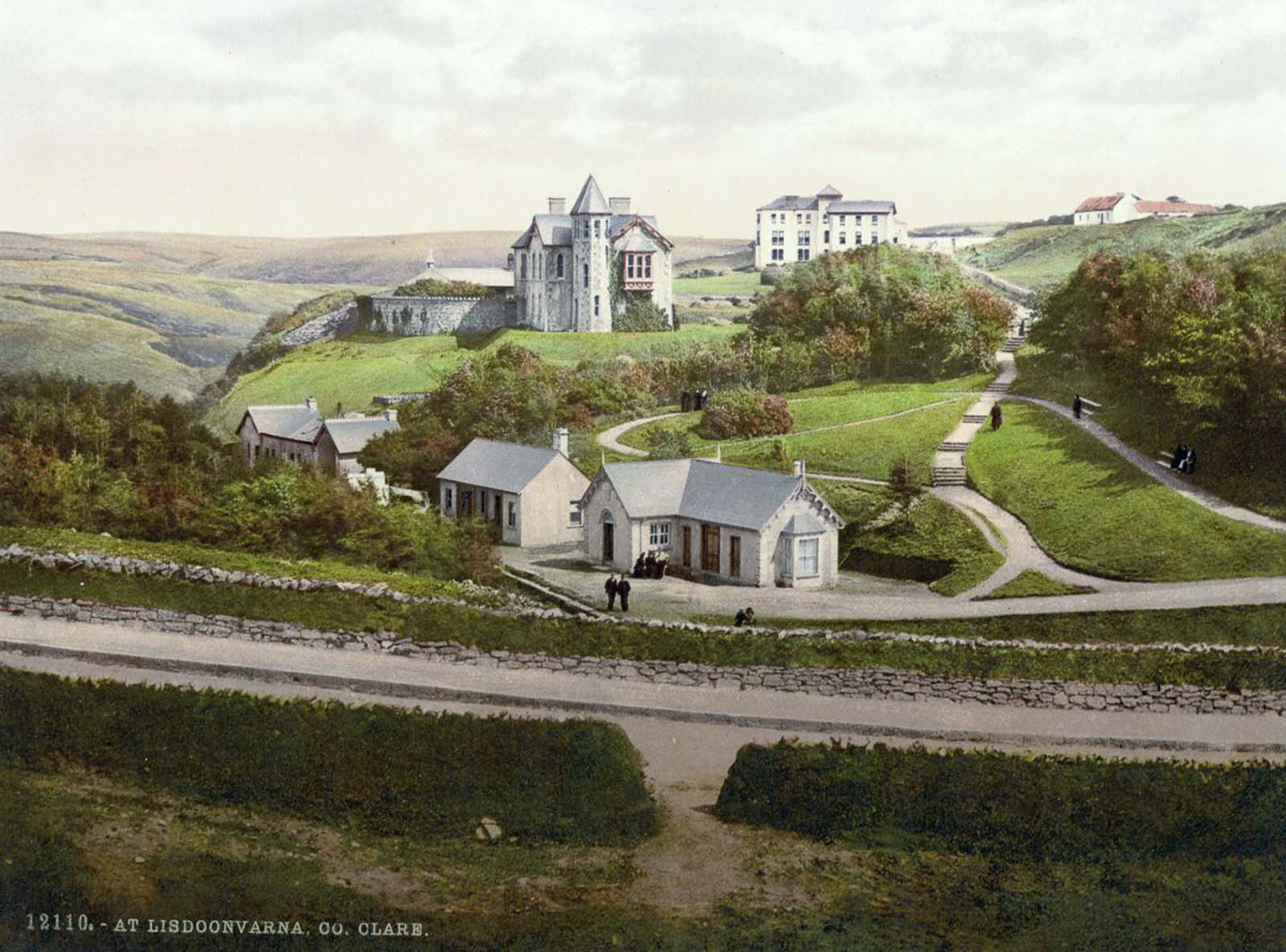
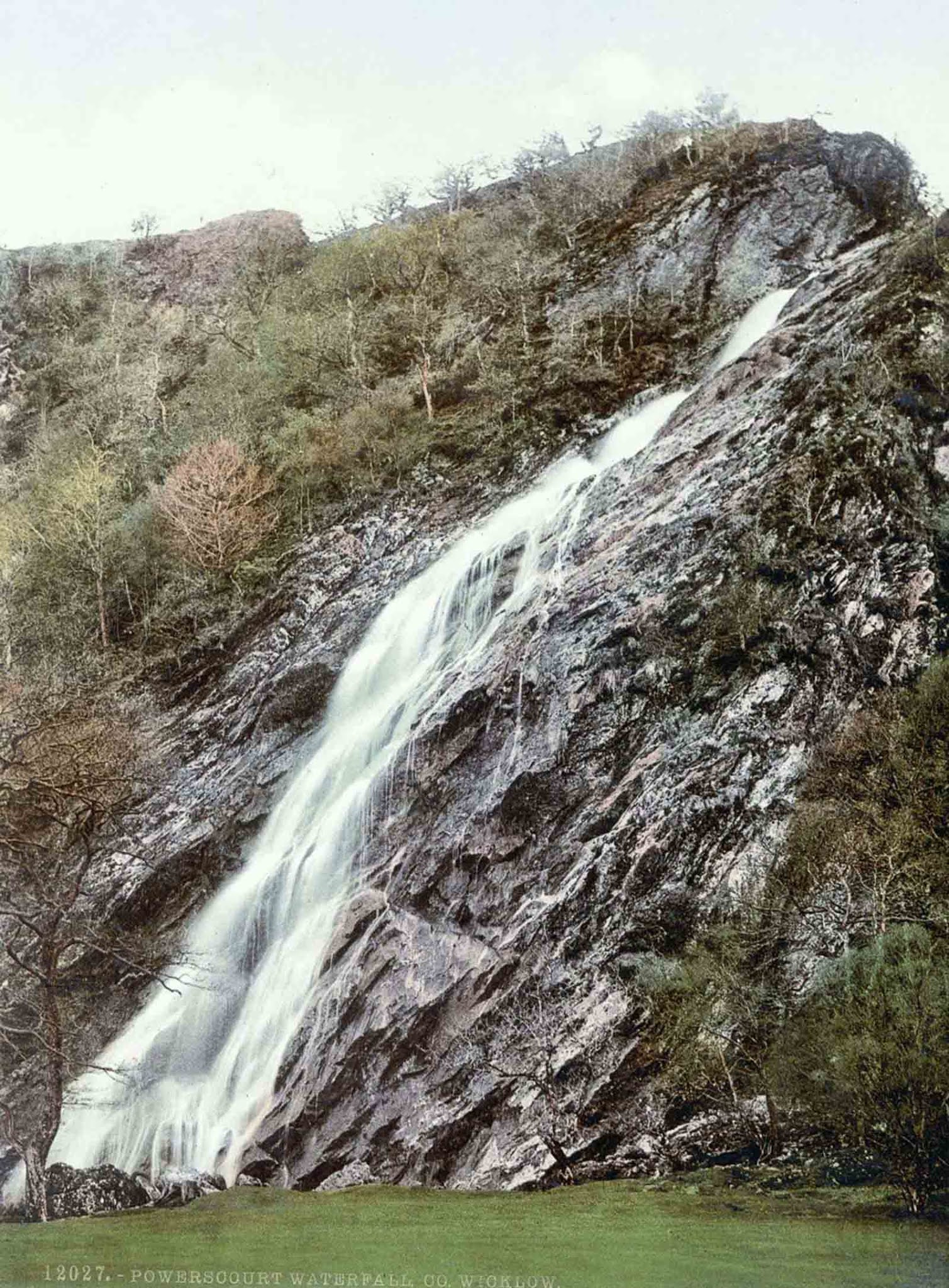
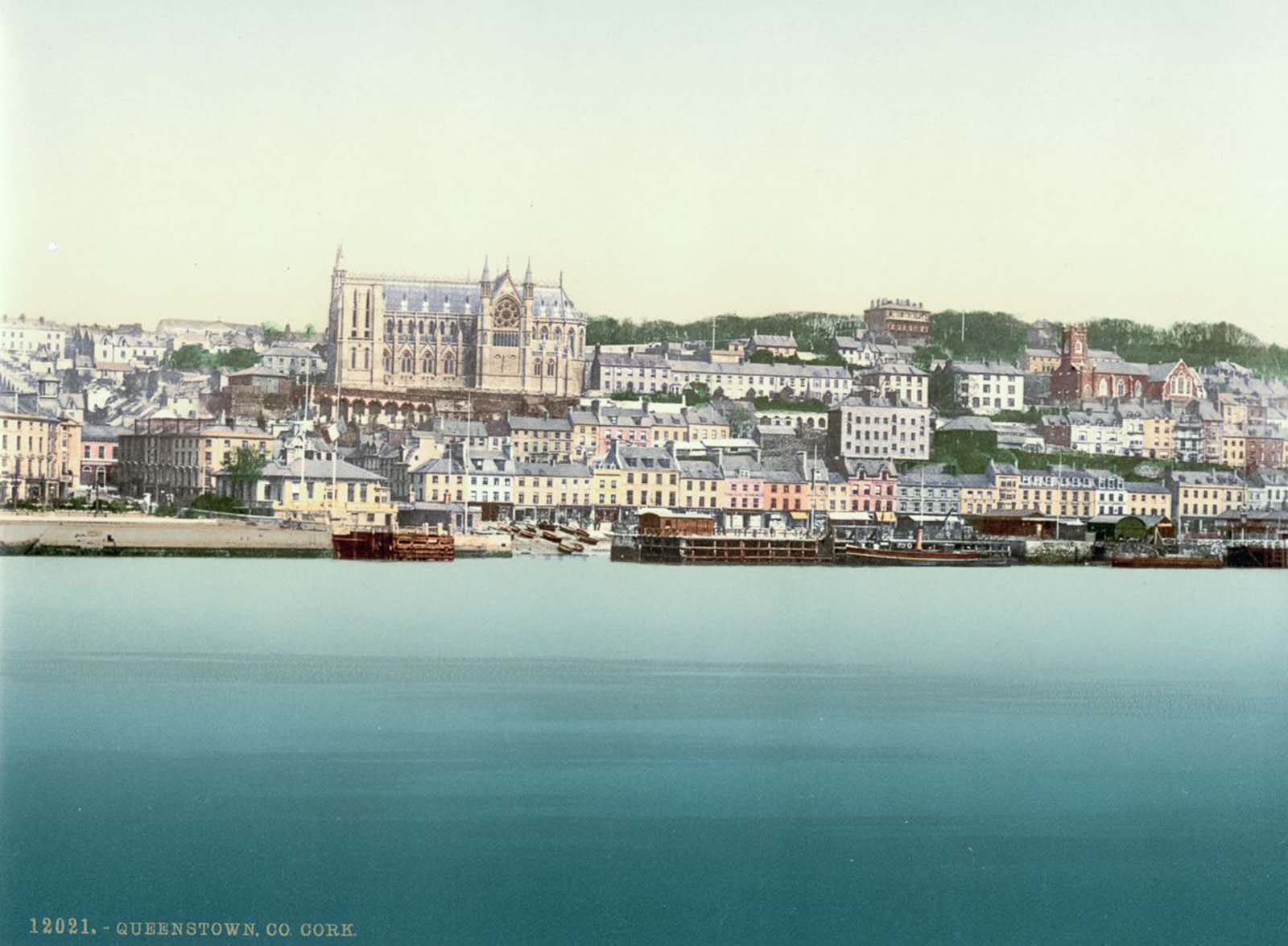
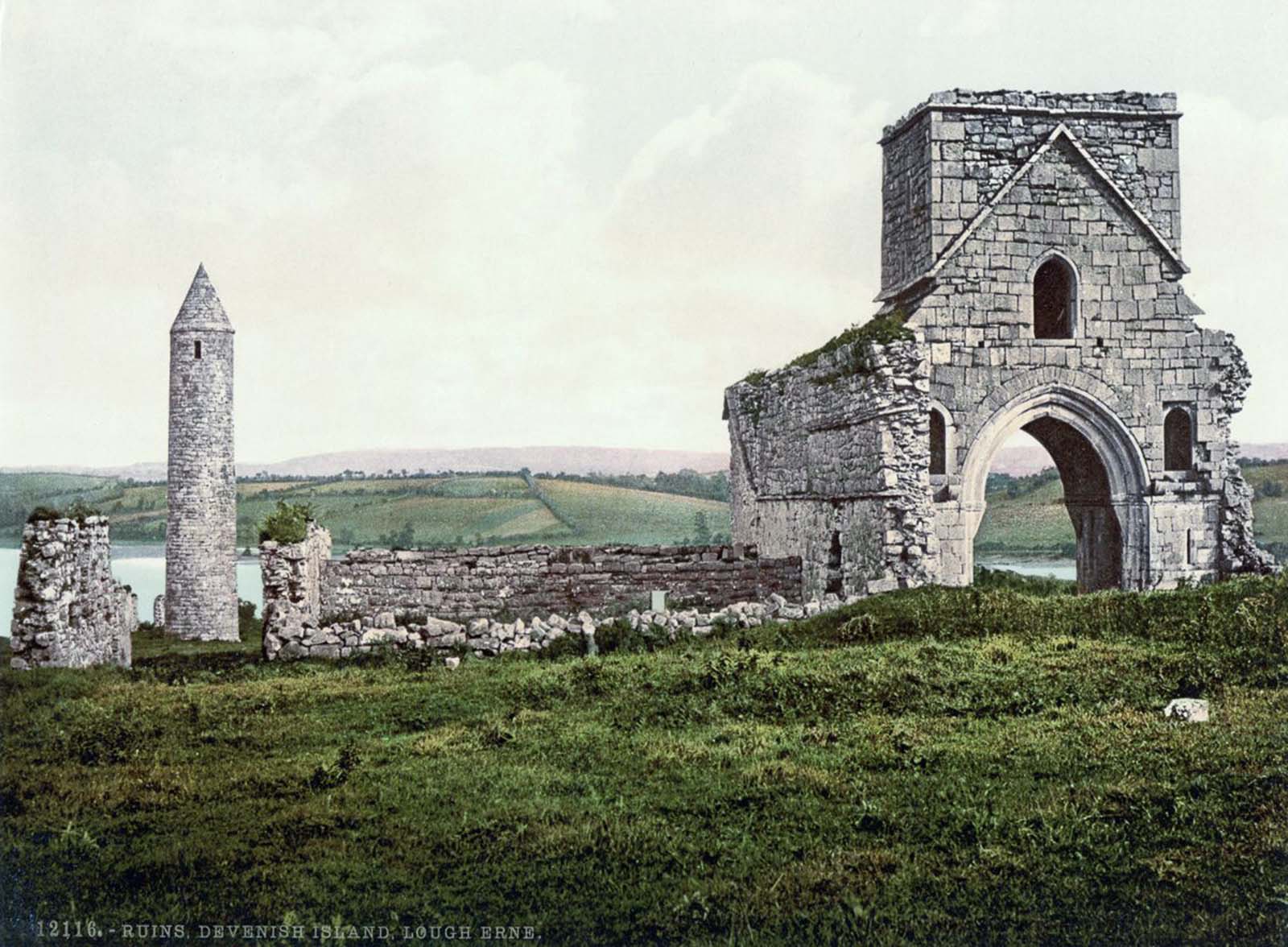
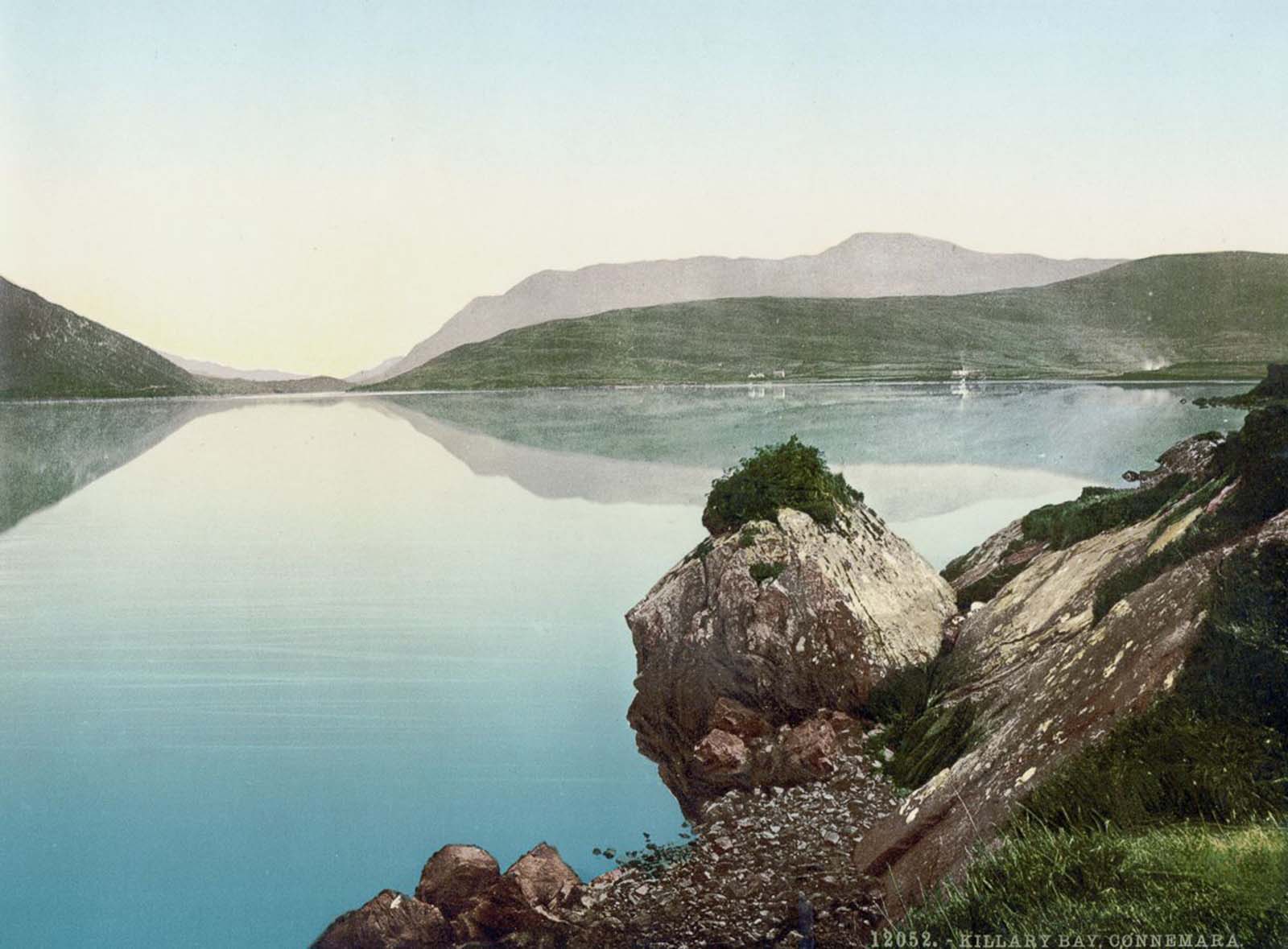
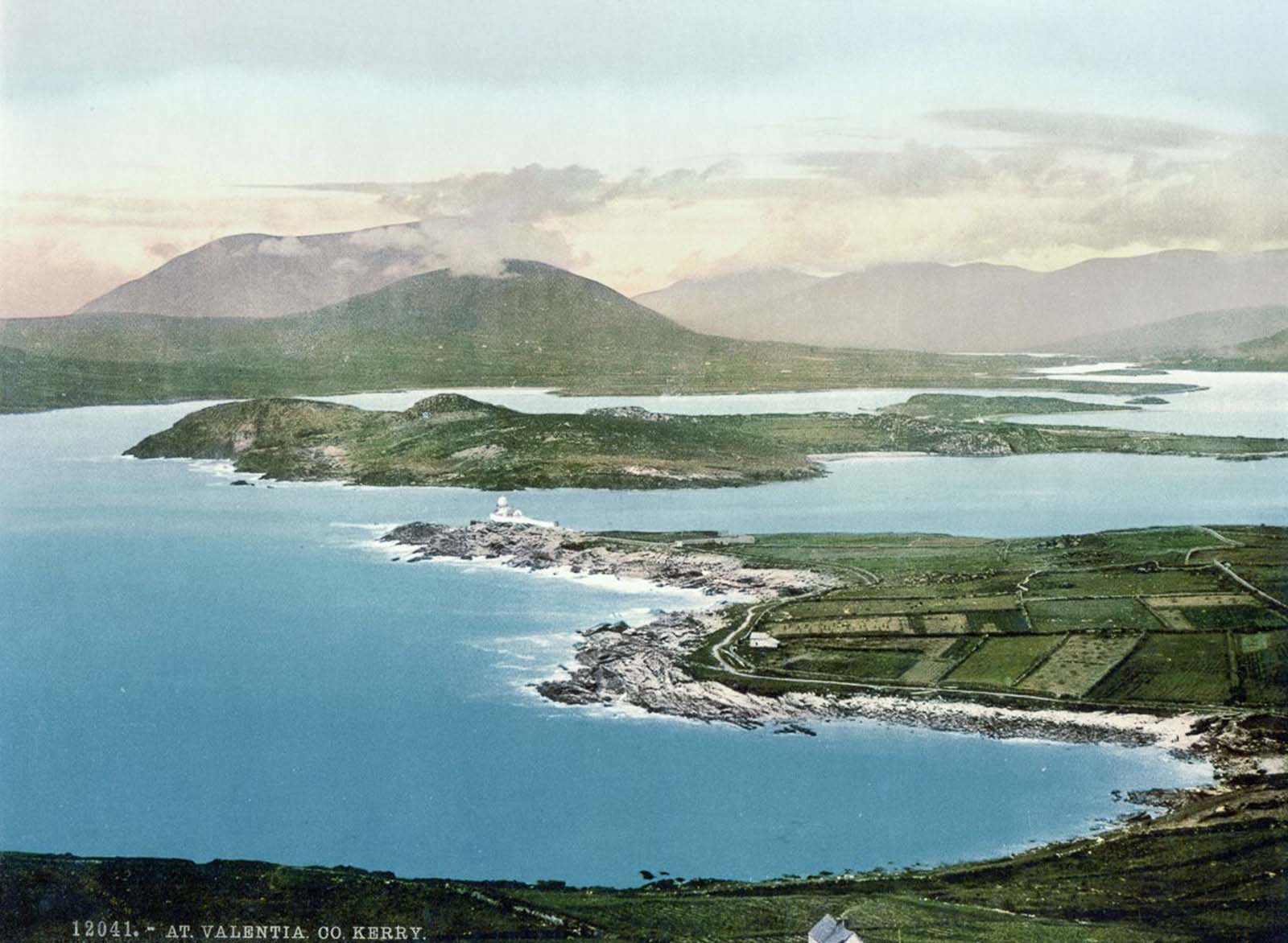
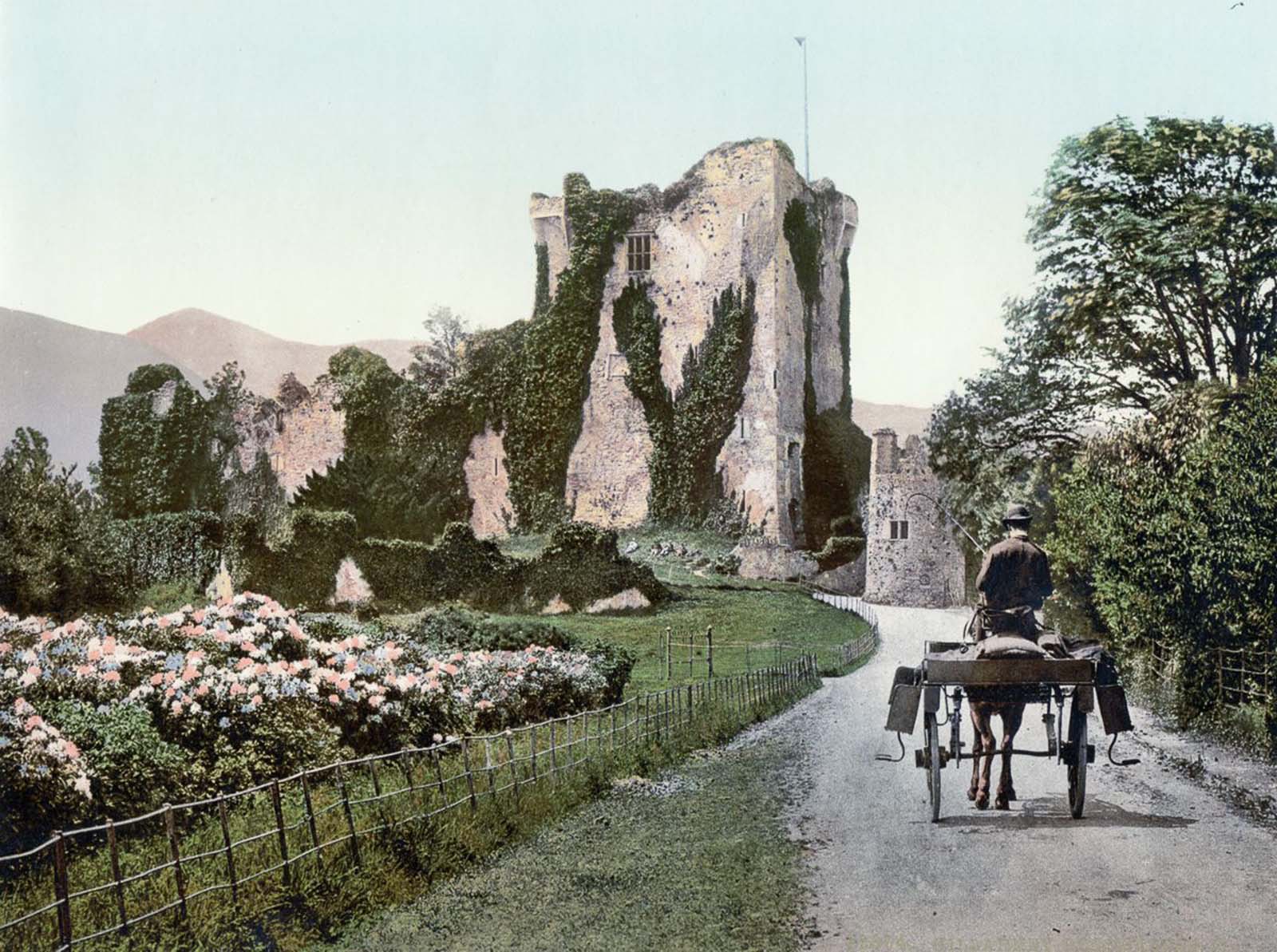
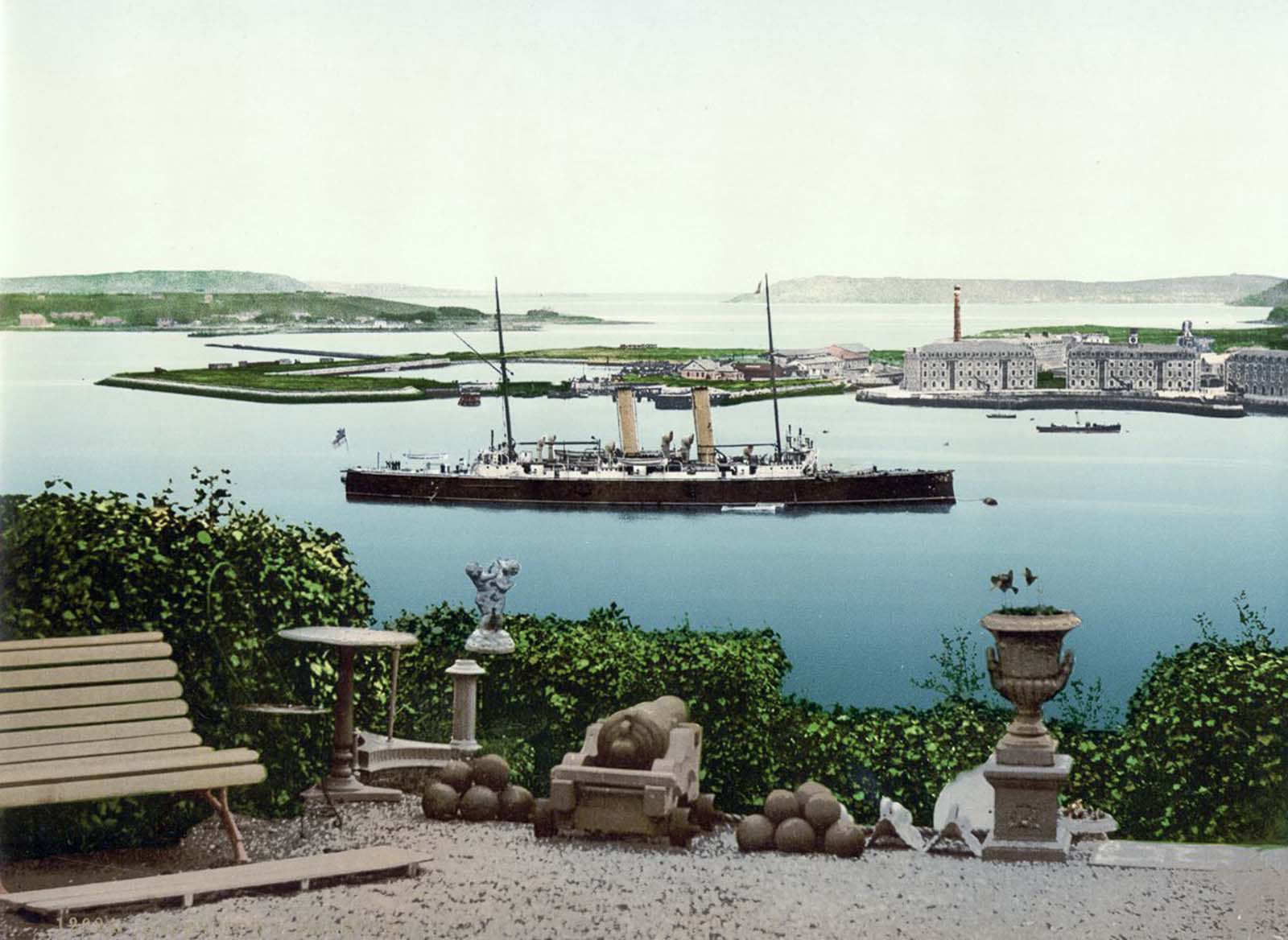
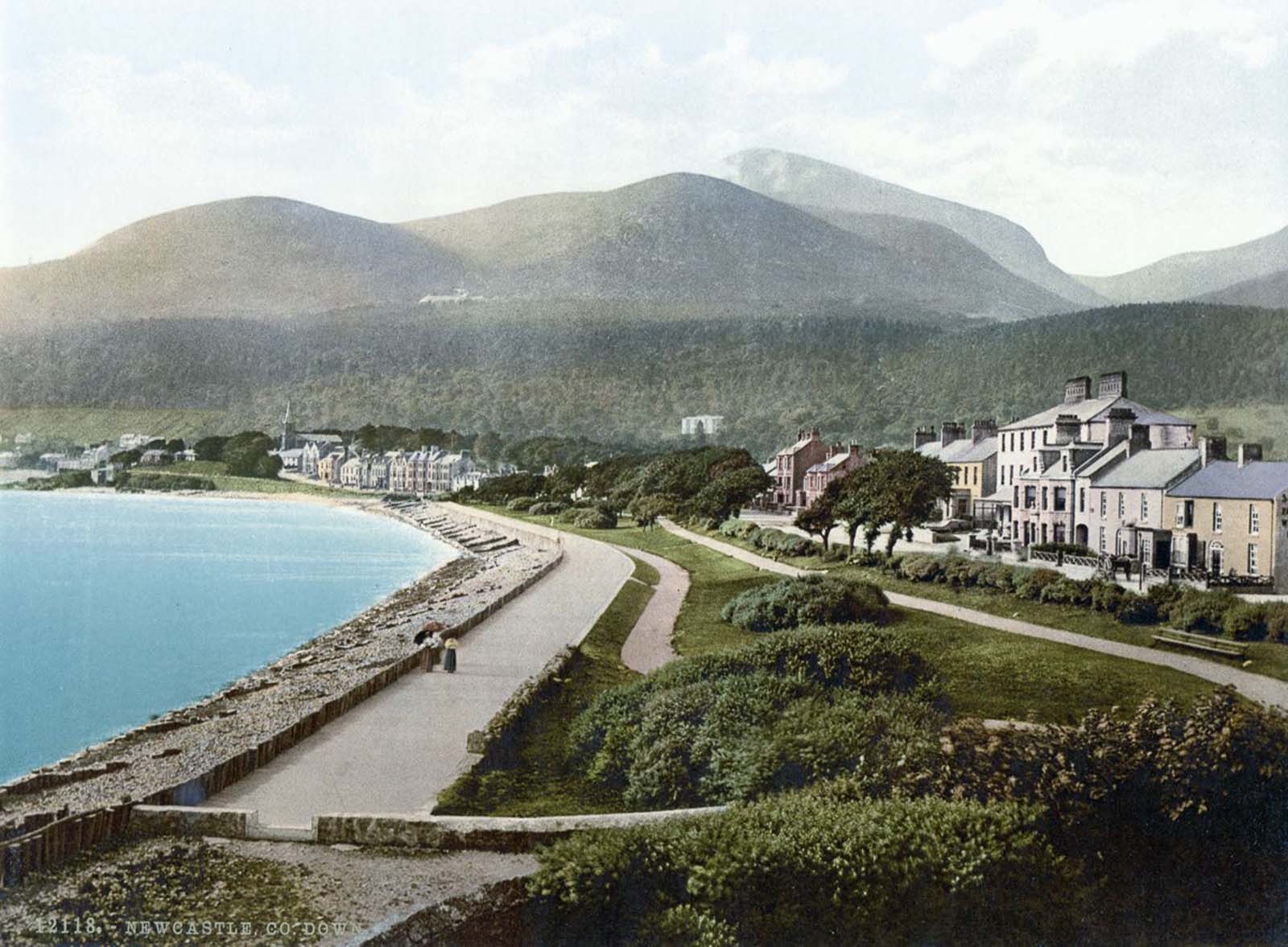
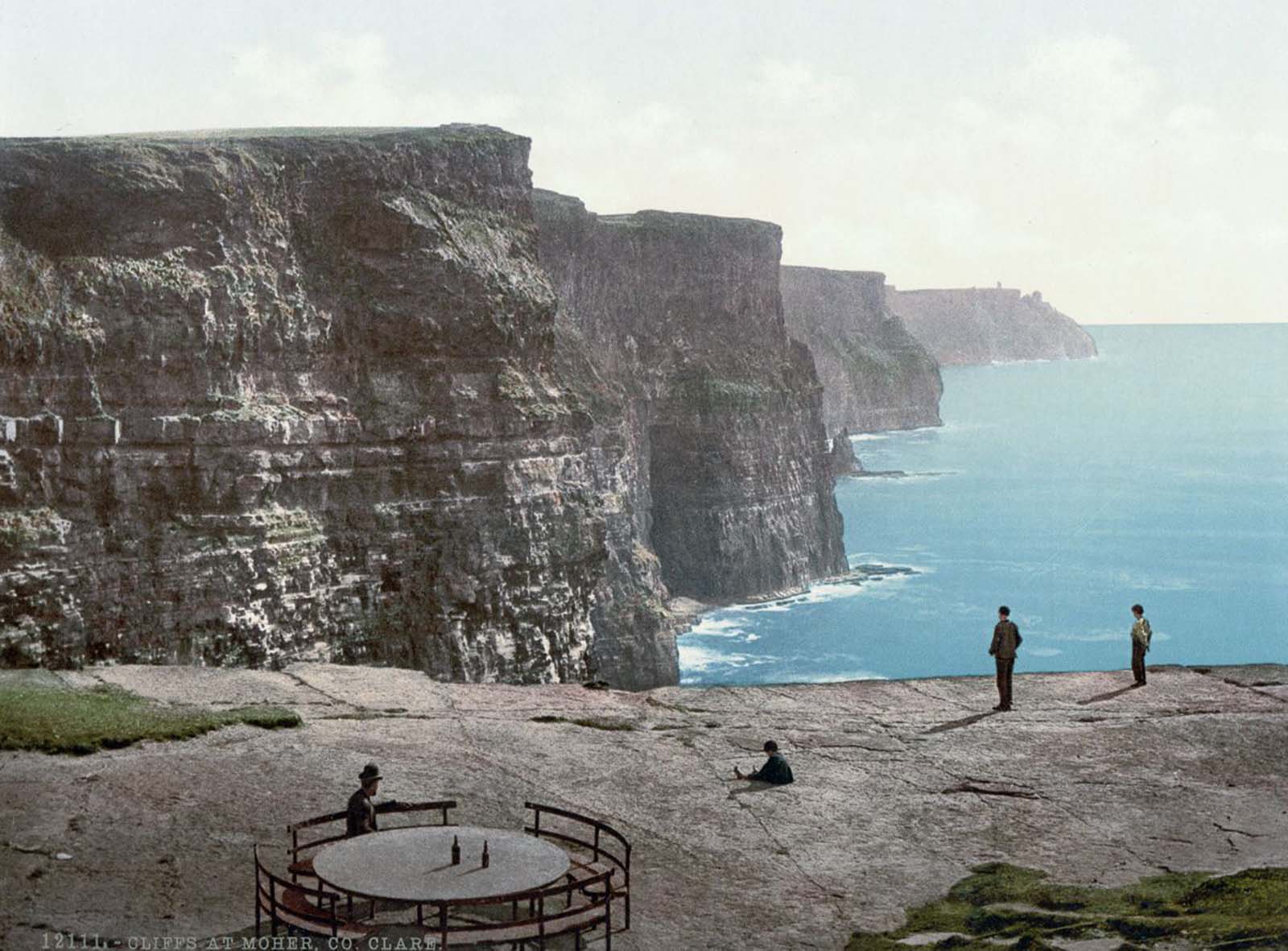
Video
Watch the 4K video of Her Majesty Queen Victoria’s last visit to Ireland in 1900, the only “Victorian” film captured! Don’t miss this rare historical footage.
Conclusion: Preserving Ireland’s Rich History Through Color
The Photochrom postcards from the 1890s provide a unique and invaluable glimpse into Ireland’s past. They capture the beauty of the land, the vibrancy of the cities, and the simplicity of rural life, all brought to life in stunning color. As both historical documents and works of art, these postcards remain a testament to Ireland’s enduring appeal and the artistry of the Photochrom technique. Today, as they continue to be rediscovered and appreciated, they serve as a reminder of the rich history that shaped modern Ireland.
These postcards are more than just tourist souvenirs from a bygone era; they are windows into the past, offering us a chance to connect with Ireland’s history in a way that feels both personal and timeless.
